Forums
- Forums
- Axis And Allies Forum
- General Discussion
- Aviation News
Aviation News
Post a reply
- Go to Next topic
- Go to Welcome
- Go to Introduce Yourself
- Go to General Discussion
- Go to Screenshots, Images and Videos
- Go to Off topic
- Go to Works in Progress
- Go to Skinning Tips / Tutorials
- Go to Skin Requests
- Go to IJAAF Library
- Go to Luftwaffe Library
- Go to RAF Library
- Go to USAAF / USN Library
- Go to Misc Library
- Go to The Ops Room
- Go to Made in Germany
- Go to Campaigns and Missions
- Go to Works in Progress
- Go to Juri's Air-Raid Shelter
- Go to Campaigns and Missions
- Go to Works in Progress
- Go to Skinpacks
- Go to External Projects Discussion
- Go to Books & Resources
-
 Main AdminA U.S. Marine with Marine Fighter Attack Squadron prepares to launch an F-35B from the flight deck of HMS Queen Elizabeth for participation in Exercise Coral Mustang in the Western Pacific Ocean in August 23, 2021. Coral Mustang was an opportunity for 5th-generation aircraft from the United Kingdom Carrier Strike Group (CSG) 21 and Expeditionary Strike Group 7 to train with the United States Air Force and the Japan Air Self-Defence Force. CSG21’s global deployment provides an opportunity to train and exercise with our Allies and regional partners.
Main AdminA U.S. Marine with Marine Fighter Attack Squadron prepares to launch an F-35B from the flight deck of HMS Queen Elizabeth for participation in Exercise Coral Mustang in the Western Pacific Ocean in August 23, 2021. Coral Mustang was an opportunity for 5th-generation aircraft from the United Kingdom Carrier Strike Group (CSG) 21 and Expeditionary Strike Group 7 to train with the United States Air Force and the Japan Air Self-Defence Force. CSG21’s global deployment provides an opportunity to train and exercise with our Allies and regional partners.
(Photo by 1st Lt. Zachary Bodner)
Flight crew with Marine Fighter Attack Squadron 112 (VMFA-112), Marine Aircraft Group 41, 4th Marine Aircraft Wing, U.S. Marine Forces Reserve prepared to launch six F/A-18 Hornets in support of a training exercise aboard Naval Air Station Fort Worth Joint Reserve Base, Texas, August 24, 2021.
VMFA-112 participated in an inter-service exercise with Marine Aerial Refueler Squadron 234, Marine Fighter Training Squadron 401, and the Air Force’s 22nd Air Refueling Wing to conduct a long-range strike from Fort Worth to a training range in Yuma, Arizona, spanning over 1000 miles and five flight hours, while evading and maneuvering against F-5N Tiger II’s.
The overall mission time, coordination with external agencies, inter-unit and service operability between fellow MAG-41 squadrons and the Air Force, and unfamiliar territory exercised the capabilities of all aircraft and pilots involved.
(Photos by Sgt. Booker Thomas)
A U.S. Air Force F-22 Raptor assigned to the 94th Fighter Squadron, Joint Base Langley-Eustis, Virginia, is parked during RED FLAG-Alaska 21-3 at Joint Base Elmendorf-Richardson, Alaska, Aug. 24, 2021. RF-A 21-3 is a Pacific Air Forces-sponsored exercise designed to provide realistic training in a simulated combat environment. A series of commander-directed field training exercises provide joint offensive counter-air, interdiction, close air support, and large-force employment training. (U.S. Air Force photo by Senior Airman Samuel Colvin)
A U.S. Air Force E-3 Sentry Airborne Warning and Control System aircraft assigned to the 961st Airborne Air Control Squadron, Kadena Air Base, Japan, takes off for a RED FLAG-Alaska sortie at Joint Base Elmendorf-Richardson, Alaska, Aug. 24, 2021. RF-A 21-3 is a Pacific Air Forces-sponsored exercise designed to provide realistic training in a simulated combat environment. A series of commander-directed field training exercises provide joint offensive counter-air, interdiction, close air support, and large-force employment training. (U.S. Air Force photo by Senior Airman Samuel Colvin)
A U.S. Air Force F-15C Eagle assigned to the 493rd Fighter Squadron is marshalled out onto the taxiway at Royal Air Force Leeming, Aug. 25, 2021. U.S. forces routinely operate across the globe to forward locations, remaining flexible and agile for rapid response to changes in the operational environment. (U.S. Air Force photo by Staff Sgt. Rachel Maxwell)
A U.S. Air Force B-2 Spirit bomber assigned to the 509th Bomb Wing, F-15C Eagle, and F-15E Strike Eagles assigned to the 48th Fighter Wing, fly in formation during a Bomber Task force mission over the North Sea, Aug. 25, 2021. U.S. forces routinely operate across the globe to forward locations, remaining flexible and agile for rapid response to changes in the operational environment. (U.S. Air Force photos by Staff Sgt. Rachel Maxwell)




A Qatar Airways Boeing 777-300 aircraft rests on the flightline at Ramstein Air Base, Germany, Aug. 25, 2021. Qatar Airways is helping transfer Afghan evacuees during Operation Allies Refuge. (U.S. Air Force photo by Senior Airman Taylor Slater)
CARIBBEAN SEA - (Aug. 24, 2021) -- An Airbus AS565 Panther helicopter attached to the French navy Floréal-class frigate FS Germinal (F735), lands on the flight deck of the San Antonio-class amphibious transport dock ship USS Arlington (LPD 24), Aug. 24, 2021. The commanding officer of Germinal visited Arlington to conduct a key leader engagement and exchange best practices as they work together toward the common goal of supporting the humanitarian relief effort in Haiti. Arlington is deployed to U.S. Naval Forces Southern Command/U.S. 4th Fleet to support humanitarian assistance and disaster relief (HADR) efforts in Haiti following a 7.2-magnitude earthquake Aug. 14, 2021. (U.S. Navy photo by Mass Communication Specialist 2nd Class John Bellino/Released)
PHILIPPINE SEA (Aug. 25, 2021) An F-35B Lightning II fighter aircraft from the 31st Marine Expeditionary Unit (MEU) prepares to launch from the flight deck of the forward-deployed amphibious assault ship USS America (LHA 6) during flight operations. America and the 31st MEU's air combat element maintain a strategic ready deck for a variety of missions. America, flagship of the America Expeditionary Strike Group, along with the 31st MEU, is operating in the U.S. 7th Fleet area of responsibility to enhance interoperability with allies and partners and serve as a ready response force to defend peace and stability in the Indo-Pacific region. (U.S. Navy photo by Mass Communication Specialist 3rd Class Matthew Cavenaile)
PHILIPPINE SEA (Aug. 24, 2021) The Royal Navy aircraft carrier HMS Queen Elizabeth (R 08) sails in formation with the forward-deployed amphibious assault ship USS America (LHA 6) and ships from the U.S. Navy, Royal Navy, Royal Netherlands Navy and Japan Maritime Self-Defense Force during a formation exercise. America, flagship of the America Expeditionary Strike Group, along with the 31st Marine Expeditionary Unit, is operating in the U.S. 7th Fleet area of responsibility to enhance interoperability with allies and partners and serve as a ready response force to defend peace and stability in the Indo-Pacific region. (U.S. Navy photo by Mass Communication Specialist 2nd Class Vincent E. Zline)
26.08.2021.
Russian pilots strengthen their leadership after three flight exercuses at Aviadarts 2021 competition
During the stage, the pilots had to detect 5 targets of various shapes, sizes and colors in an area of 50 square kilometers, without the use of technical means.
On the eve, the competition program was held at such stages as navigation and piloting technique.
The crews of Mi-8 helicopters from the Stavropol Territory received the maximum number of points in the history of the competition for performing the piloting technique.
It is worth noting that during the flight task, the skills of pilots performing aerobatics in pairs were assessed, including such elements as an ascending and descending spiral, turn with regrouping, and others. At the same time, both the accuracy of the execution of each of the figures and the maintenance of the formation parameters, the established intervals and distances between the helicopters were assessed.
For reference:
The international competition of flight crews Aviadarts 2021 will be held in the Ryazan region from 22 August to 4 September. The competition involves the Dyagilevo airfield and the Dubrovichi training ground. Teams of the People's Republic of China, the Republic of Belarus and the Russian Federation are participating. In total, about 60 crews are involved.
Pilots will compete in the following elements of the competition: physical training, visual aerial reconnaissance, piloting techniques, navigation. The final stage of the competition will be the combat use of aviation weapons against ground targets. The crews will perform practical launches of unguided aircraft missiles, bombing and firing from aircraft guns.
There are seven categories to determine the best pilots of fighter jets, bombers, assualt, long-range, military transport aircraft, and army aviation.
The flights involved J-10 and J-16, H-6, Y-9 and Y-20 planes of the People's Liberation Army of China, Su-25 attack aircraft, Mi-8 and Mi-24 helicopters Air Force of the Republic of Belarus, Su-35S, Su-34 fighters, Mi-28N and Ka-52 helicopters of the Russian Aerospace Forces and other types of aviation equipment.
(Photos courtesy of the Ministry of Defence of the Russian Federation)
ENGLEWOOD, Colorado – August 26, 2021 – United Rotorcraft, a division of Air Methods Corporation, has awarded Sikorsky, a Lockheed Martin company, a contract for five S-70™ Black Hawk® helicopters. The bulk order will enable United Rotorcraft, as the only company authorized by Sikorsky to modify Black Hawk aircraft to the FIREHAWK® configuration, to quickly deliver these new production aircraft for aerial firefighting in support of public agencies battling increasingly destructive wildland fires.
“The FIREHAWK helicopter is fast becoming one of the most powerful and effective aerial firefighting assets in California, attacking and extinguishing wildfires before they spread out of control,” said Larry Alexandre, United Rotorcraft president. “Acquiring five S-70 Black Hawk aircraft from Sikorsky with deliveries over the next 7 to 18 months confirms United Rotorcraft’s commitment to the FIREHAWK helicopter and its mission, and ensures their availability to support future demand from U.S. Western States or firefighting agencies around the world.”
Sikorsky will produce the five S-70 Black Hawk aircraft at Lockheed Martin’s PZL Mielec manufacturing line in Poland. Deliveries to United Rotorcraft’s 55,000+ square foot completions facility in Colorado are expected between early 2022 and mid-2023. The first aircraft received will be configured as a FIREHAWK helicopter for the State of Colorado, which announced its contract with United Rotorcraft on Aug. 16.
“Sikorsky and United Rotorcraft have worked closely for 25 years to develop, test and upgrade two S-70 variants of the FIREHAWK helicopter for the Los Angeles County Fire Department, CAL FIRE and the San Diego Fire-Rescue Department,” said Jason Lambert, vice president of Sikorsky Global Commercial and Military Systems. “We applaud United Rotorcraft’s bold leadership to bring the toughest, safest, most reliable fire suppression and rescue helicopter in existence today into the hands of first responders sooner than ever.”
To modify a Black Hawk helicopter to the Firehawk configuration, United Rotorcraft installs and integrates a 1,000-gallon (3,785-liter) external water tank system to the aircraft’s belly. Fingertip controls allow pilots to drop the precise amount of water with high accuracy and refill the tank via a retractable snorkel in 60 seconds or less while hovering 10 feet over a water source. United Rotorcraft works hand in hand with public agencies to further customize the aircraft, as needed, from communications and navigation systems, to cabin interiors, transforming the FIREHAWK into a true multi-mission aircraft, with the ability to transport up to 12 firefighters, provide medical care on board, or perform search and rescue operations.
United Rotorcraft, a division of Air Methods Corporation, (www.unitedrotorcraft.com) specializes in the design, manufacture and installation of ground and aerial mission critical equipment for front line workers, from firefighting and law enforcement, to HEMS and Medevac.
August 26, 2021.
Bombardier is proud to announce the recent arrival of a fifth Global business jet at Swedish defense supplier Saab’s Linköping, Sweden, location, ready for conversion into Saab’s Airborne Early Warning and Control solution known as GlobalEye. The aircraft was delivered to Saab from Bombardier’s Toronto manufacturing site and underwent interior completions work at Flying Colours Corp. in Peterborough, Ontario, prior to arriving in Sweden.
“Bombardier Global aircraft are ideally suited for conversion into specialized assets, and we are recognized around the world for our collaborative, flexible approach and unparalleled expertise,” said Steve Patrick, Vice President, Specialized Aircraft, Bombardier. “Our Global 6000 aircraft and increasingly its successor, our Global 6500 aircraft, are known as the go-to platforms for high-altitude, long-endurance missions that require significant payload capability with ample available power, hosted on a reliable platform featuring advanced avionics and systems technology. Bombardier’s signature smooth flight technology provides a comfortable environment for operators and highly stable platform for sensors.”
“Saab partners with industry leaders, which is why we chose Bombardier’s Global 6000 aircraft as the platform for our advanced Airborne Early Warning and Control solution. We are looking forward to continuing our collaboration with Bombardier and Canadian industry,” says Carl-Johan Bergholm, Senior Vice President and head of Saab business area Surveillance.
Saab is a leading global defence and security company and has been a trusted partner of the Canadian military for more than 30 years.
The company’s GlobalEye aircraft completed its maiden flight in early 2018 and three have been delivered from Saab to the customer.
Bombardier Global business jets are a shining example of Canadian aerospace innovation, with ultra-long range, spacious cabins and class-leading maintenance intervals and reliability. Global aircraft are ideally suited to a range of specialized missions, from securing airspace, borders and infrastructure to head-of-state transport and humanitarian assistance including long-range medical evacuations.
Fellow Canadian company Flying Colours Corp. supports Saab through the introduction of a practical, functional interior for the mission system operators.
“Designing a special mission interior necessitates an intelligent approach, ingenuity and imagination,” said Sean Gillespie, Executive VP for Flying Colours Corp. “Our work with Saab showcases the high levels of technical expertise delivered by our experience, knowledge and the exceptional talent within our team.”
Bombardier Specialized Aircraft offers flexible solutions for customers around the world, with conversion options ranging from turnkey packages comprising the complete design, building, testing and certification activity, through to specialized engineering support and technical oversight of customer-specific projects, including modifications to external shapes such as antennae, sensors and radars. Bombardier has designated its Wichita, Kansas, facility as the Centre of Excellence for Specialized Aircraft, with the experience and expertise to carry out complex modifications on site.
More than 550 Bombardier Global, Challenger and Learjet business aircraft are currently performing specialized missions worldwide.
WICHITA, Kan. (Aug. 26, 2021) – Textron Aviation today announced it successfully completed initial ground engine runs on the prototype Beechcraft Denali single-engine turboprop powered by GE Aviation’s new advanced Catalyst engine. The ground engine runs, which took place at Textron Aviation’s west campus in Wichita, Kansas, verified the functionality of the fuel system and engine, as well as the interface with the avionics and electrical systems. The testing moves the clean-sheet design aircraft closer to its milestone first flight, which is anticipated by the end of the year.
The Beechcraft Denali is designed and manufactured by Textron Aviation Inc., a Textron Inc. (NYSE:TXT) company.
“These successful engine runs are a significant step toward the upcoming inaugural flight for the Beechcraft Denali, and they are a testament to the determination and collaboration from both the Textron Aviation and GE Aviation teams,” said Chris Hearne, senior vice president, Engineering. “The Denali features a technologically advanced engine that burns less fuel. It has an intuitive avionics suite that eases pilot workload and boasts the most spacious cabin in its segment. We are excited to get this aircraft into the hands of our eager customers.”
GE Aviation’s Catalyst engine has completed over 2,450 hours of testing and is prepping for a first flight on its Beechcraft King Air flying test bed. The Catalyst engine is a more environmentally friendly engine that burns less fuel than older turboprop technologies. The engine can also use sustainable aviation fuel, which results in lower emissions. The 1,300 shaft horsepower (SHP)-rated turboprop engine eases pilot workload with its single-lever power and propeller control. The Full Authority Digital Engine Controlled (FADEC) engine provides trend monitoring, which allows for on-condition maintenance with no mid-life Hot Section Inspection required.
The Beechcraft Denali development program has achieved several important milestones in recent months. Earlier this summer, GE Aviation Catalyst engine was installed on the Beechcraft Denali prototype airframe and the aircraft was powered on for the first time. Two other Denali flight test articles are also in development. Three additional ground test articles will be used for the airframe static and fatigue tests, and for cabin interior development and testing. The company anticipates certification for the Denali in 2023.
Technological advances
The Denali cockpit features the Garmin G3000 intuitive avionics suite featuring high-resolution screens and touchscreen controllers. An integrated Garmin autothrottle is now a standard feature, which interfaces with the Automatic Flight Control System (AFCS) and Flight Management System (FMS) to provide easy speed control throughout all regimes of flight from takeoff to touchdown.
Other standard G3000 features include a 10-inch weather radar, Terrain Awareness Warning System (TAWS-B), and dual transponders with automatic dependent surveillance-broadcast (ADS-B) capabilities, which are compliant with the latest air traffic control requirements.
The aircraft is equipped with McCauley’s new 105-inch diameter composite, 5-blade, constant speed propeller, which is full feathering with reversible pitch and ice protection. The propeller will undergo a series of certification tests, and several are already underway.
Class-leading passenger experience
The Beechcraft Denali’s flat floor cabin is designed to be the largest in its segment and offers the versatility to easily convert between passenger and cargo configurations. The Denali cabin features a standard seating configuration of six individual reclining seats and offers a nine-place high density seating option.
The aircraft boasts a digital pressurization system maintaining a 6,000-foot cabin altitude at a service ceiling of 30,000 feet. The Denali also offers passengers the convenience of adjusting the cabin temperature and airflow from a climate-control switch panel located on the cabin sidewall.
Denali customers will also enjoy large cabin windows, interior LED lighting, a forward refreshment cabinet and an in-flight accessible baggage compartment. An optional externally serviceable belted lavatory with pocket door enclosure that is located in the rear of the cabin is also available.
-
 Main AdminF-16 Fighting Falcons assigned to the 31st Fighter Wing from Aviano Air Base, Italy, take off Aug. 25, 2021, at Hill Air Force Base, Utah. The wing was participating in a Weapons System Evaluation Program, known as Combat Hammer and Combat Archer, which tests and validates the performance of crews, pilots, and their technology while deploying precision-guided munitions. (U.S. Air Force photos by Cynthia Griggs)
Main AdminF-16 Fighting Falcons assigned to the 31st Fighter Wing from Aviano Air Base, Italy, take off Aug. 25, 2021, at Hill Air Force Base, Utah. The wing was participating in a Weapons System Evaluation Program, known as Combat Hammer and Combat Archer, which tests and validates the performance of crews, pilots, and their technology while deploying precision-guided munitions. (U.S. Air Force photos by Cynthia Griggs)



F-35A Lightning II's assigned to the 63rd Fighter Squadron from Luke Air Force Base, Arizona, take off Aug. 25, 2021, at Hill Air Force Base, Utah. The squadron was participating in a Weapons System Evaluation Program, known as Combat Hammer and Combat Archer, which tests and validates the performance of crews, pilots, and their technology while deploying precision-guided munitions. (U.S. Air Force photos by Cynthia Griggs)



CARIBBEAN SEA - (Aug. 26, 2021) — A P-8A Poseidon, attached to the “Red Lancers” of Patrol Squadron (VP) 10, flies over the San Antonio-class amphibious transport dock ship USS Arlington (LPD 24) after completing an intelligence, surveillance and reconnaissance (ISR) mission in support of Joint Task Force-Haiti, Aug. 26, 2021. Arlington is deployed to U.S. Naval Forces Southern Command/U.S. 4th Fleet to support humanitarian assistance and disaster relief (HADR) efforts in Haiti following a 7.2-magnitude earthquake Aug. 14, 2021. (U.S. Navy photo by Mass Communication Specialist 2nd Class John Bellino/Released)
-
 Main AdminA United States Marine Corps MV-22B Osprey with Marine Medium Tiltrotor Squadron 266, 2nd Marine Aircraft Wing, II Marine Expeditionary Force, arrives in Port-au-Prince, Haiti, to support Joint Task Force-Haiti for a humanitarian assistance and disaster relief mission, Aug. 27, 2021. (U.S. Marine Corps phot by Cpl. Yuritzy Gomez)
Main AdminA United States Marine Corps MV-22B Osprey with Marine Medium Tiltrotor Squadron 266, 2nd Marine Aircraft Wing, II Marine Expeditionary Force, arrives in Port-au-Prince, Haiti, to support Joint Task Force-Haiti for a humanitarian assistance and disaster relief mission, Aug. 27, 2021. (U.S. Marine Corps phot by Cpl. Yuritzy Gomez)
The Coast Guard conducts Hurricane Ida post-storm overflights along the Gulf Coast on August 30, 2020. Assets conducted critical incident search and rescue overflights and assessing for damage along the Gulf Coast Region of Louisiana following Hurricane Ida. (U.S. Coast Guard photo by Petty Officer 2nd Class Ryan Dickinson)
A Republic of Singapore Air Force A330 Multi-Role Tanker Transport aircraft taxis on the runway of Spangdahlem Air Base, Germany, Aug. 27, 2021. The Singapore Armed Forces is working alongside partners like the United States in order to provide a safe and secure passage for displaced families and evacuees from Afghanistan. (U.S. Air Force photo by Tech. Sgt. Maeson L. Elleman)
ARABIAN SEA (Aug. 28, 2021) – An MH-60S Sea Hawk helicopter, attached to the “Golden Falcons” of Helicopter Sea Combat Squadron (HSC) 12, prepares to land on the flight deck of aircraft carrier USS Ronald Reagan (CVN 76), not pictured, in the Arabian Sea, Aug. 28. Ronald Reagan is the flagship for Carrier Strike Group 5 and is deployed to the U.S. 5th Fleet area of operations in support of naval operations to ensure maritime stability and security in the Central Region, connecting the Mediterranean and the Pacific through the western Indian Ocean and three strategic choke points. (U.S. Navy photo by Mass Communication Specialist 3rd Class Santiago Navarro)
ARABIAN SEA (Aug. 28, 2021) An E-2D Hawkeye reconnaissance plane, attached to the “Tiger Tails” of Airborne Early Warning Squadron (VAW) 125, launches from the flight deck of aircraft carrier USS Ronald Reagan (CVN 76) in the Arabian Sea, Aug. 28, 2021. Ronald Reagan is the flagship for Carrier Strike Group 5 and is deployed to the U.S. 5th Fleet area of operations in support of naval operations to ensure maritime stability and security in the Central Region, connecting the Mediterranean and the Pacific through the western Indian Ocean and three strategic choke points. (U.S. Navy photo by Mass Communication Specialist 3rd Class Santiago Navarro)
30.08.2021.
The final stage of Aviadarts international competition has started at the Dubrovichi training ground in Ryazan.
The crews of fighter, assault and army aviation aircraft will have to launch unguided missiles and fire from an aircraft gun, the flight crews of bomber and long-range aviation will have to conduct bombing, and the pilots of military transport aviation will have to land cargo for precision landing.
Specially for the most spectacular part of the competition, targets for small arms, missile and bomb weapons were prepared at the training ground near Ryazan. A direct hit on the target gives the pilot the maximum number of points. In case of hitting an appointed area, points are awarded depending on the distance from the target.
The assessment will be given to the crews based on the results of hits directly on the target field, as well as after analyzing the data of objective control devices at the range and on aircraft by referees, which includes representatives of all countries participating in the competition.
(Photos courtesy of the Ministry of Defence of the Russian Federation)
-
 Main AdminJOINT BASE ELMENDORF-RICHARDSON, Alaska (AFNS) --
Main AdminJOINT BASE ELMENDORF-RICHARDSON, Alaska (AFNS) --
Red Flag-Alaska 21-3 concluded at Joint Base Elmendorf-Richardson Aug. 27, strengthening interoperability and showcasing air dominance in the Indo-Pacific region.
RF-A is a Pacific Air Forces-sponsored multinational exercise that provides a simulated combat environment through a series of large force employment training, close air support, and joint offensive counter-air exercises.
This iteration of RF-A involved participation by the Royal Australian Air Force, in addition to the multiple U.S. military units who arrived from Kadena Air Base, Japan, and from military installations across the U.S.
“This exercise was a great opportunity for us to work closely with units from Australia and from all around the United States, showing our resolve to keep the Indo-Pacific region free and open,” said U.S. Air Force Maj. Gregory Weigel, 354th Operations Group Detachment 1 assistant director of operations.
This was the first iteration of Red Flag to feature F-35 Lighting IIs from the RAAF, along with fifth-generation aircraft from the U.S.
“Red Flag provides an excellent opportunity for our two countries in continuing to improve our interoperability and integration,” said RAAF Squadron Leader John Thornton, 2 Squadron Detachment commander. “Not only does this include the aircraft flying the missions, but also between all the support personnel from both countries like the intelligence and maintenance teams.”
“This integration and interoperability is essential in developing an intelligent and skilled workforce that is ready to deliver air power when called upon,” Thornton said.
RF-A occurs three to four times each year, with the majority of takeoffs from both JB Elmendorf-Richardson and Eielson Air Force Base.
“We accomplished a variety of training from aerial refueling, dirt landing zones and cargo airdrops to air-to-air combat and air-to-surface combat against a large simulated enemy force,” Weigel said.
Alaska’s strategic value for the exercise is due to its vast airspace, varied terrain and advanced range complexes, chiefly the Joint Pacific Alaska Range Complex, or JPARC. The JPARC boasts thousands of square miles of land and airspace, providing a realistic training environment that accommodates new technologies’ increased mobility, expanded capabilities and improved communications.
Approximately 1,800 U.S. and RAAF service members flew, maintained and supported more than 80 aircraft from more than 20 units during this iteration of the exercise.
“Two Squadron is fortunate to get the opportunity to participate in a wide variety of exercises with the U.S. Air Force,” Thornton said. “The relationships that are forged cannot be underestimated, and form part of the foundation that sees the Australia and U.S. alliance become stronger through engagement.”
Although RF-A 21-3 included U.S. and Australian forces, armed services from numerous ally and partner countries around the world have participated in past Red Flag exercises.
“I really enjoy the opportunity to work with crews from all over the world and it’s great to see them work together to solve difficult problems,” Weigel said.
In coordination with military medical personnel and public health personnel, every aspect of Red Flag-Alaska has been analyzed to ensure the appropriate mitigation measures are taken against COVID-19.
(Photo courtesy of the RAAF)
An Air and Marine Operations P-3 Orion air crew based out of Jacksonville, Florida, coducts preflight checks prior to assessing damage in Louisiana on August 30, 2021, after Hurricane Ida made landfall. Photos by Ozzy Trevino


Two U.S. Marine Attack Squadron 211 F-35B Lightning IIs, assigned to the United Kingdom Carrier Strike Group, and two U.S. Air Force F-15 Eagles, assigned to the 67th Fighter Squadron, Kadena Air Base, Japan fly over U.K. aircraft carrier HMS Queen Elizabeth, during a Large Scale Global Exercise 21 mission over the western Pacific Ocean, Aug. 24, 2021. Kadena Air Base participated in LSGE 21, which allows the U.S. to train with allies and partners to improve shared understanding, trust, and interoperability on security challenges impacting all nations. (U.S. Air Force photo by Staff Sgt. Kyle Johnson)
A U.S. Marine Corps F-35B Lightning II, Marine Fighter Attack Squadron based out of Marine Corps Air Station MCAS Iwakuni, Japan, breaks away after receiving fuel from a KC-135 Stratotanker assigned to the 909th Air Refueling Squadron, Kadena Air Base, Japan during a Large Scale Global Exercise 21 mission over the western Pacific Ocean, Aug. 18, 2021. World events underscore the urgency to develop the multi-domain operating capability; especially in the Indo-Pacific. (U.S. Air Force photo by Tech. Sgt. Micaiah Anthony)
Toulouse, 31 August 2021 – Jet2.com has placed an initial order for 36 A321neos making the airline based in Leeds, United Kingdom, a new Airbus customer and a new Airbus A320neo Family operator. The order reflects Jet2.com’s ambitious fleet expansion and renewal plans. Engine selection will be made at a later date.
Philip Meeson, Jet2.com Executive Chairman said, “Jet2.com will be proud to operate the Airbus A321neo in the years ahead. This aircraft is, in our opinion, the most efficient and environmentally friendly aircraft in its class today – it will give our holiday customers a wonderfully comfortable and enjoyable experience as they travel with us for their well deserved Jet2holiday.”
The aircraft will be configured for 232 seats with an Airspace cabin featuring innovative lighting, new seating products and 60 percent larger overhead baggage bins for added personal storage.
“We very much welcome Jet2.com’s decision. Traditionally having been operating non fly-by-wire aircraft, we note with great satisfaction that after having tested a couple of leased A321s and run a comprehensive evaluation, Jet2.com is forward looking and investing in modern and future proof Airbus fly-by-wire technology. This is a testimony to Jet2.com’s vision of efficiency, quality, performance and environmentally friendly flying,” said Christian Scherer, Chief Commercial Officer and Head of Airbus International.
The A320neo Family incorporates the latest technologies, including new generation engines and Sharklets, delivering a 20 per cent reduction in fuel consumption per seat. With an additional range of up to 500 nautical miles/900 km. or two tonnes of extra payload, the A321neo will deliver Jet2.com with additional revenue potential.
At the end of July 2021, the A320neo Family had won over 7,400 firm orders from over 120 customers worldwide.
-
 Main AdminARABIAN SEA (Aug. 31, 2021) – Sailors prepare an F/A-18F Super Hornet fighter jet, attached to the “Diamondbacks” of Strike Fighter Squadron (VFA) 102, right, and an F/A-18E Super Hornet fighter jet, attached to the “Royal Maces” of Strike Fighter Squadron (VFA) 27, for flight operations on the flight deck of aircraft carrier USS Ronald Reagan (CVN 76) in the Arabian Sea, Aug. 31. Ronald Reagan is the flagship for Carrier Strike Group 5 and is deployed to the U.S. 5th Fleet area of operations in support of naval operations to ensure maritime stability and security in the Central Region, connecting the Mediterranean and the Pacific through the western Indian Ocean and three strategic choke points. (U.S. Navy photo by Mass Communication Specialist 2nd Class Quinton A. Lee)
Main AdminARABIAN SEA (Aug. 31, 2021) – Sailors prepare an F/A-18F Super Hornet fighter jet, attached to the “Diamondbacks” of Strike Fighter Squadron (VFA) 102, right, and an F/A-18E Super Hornet fighter jet, attached to the “Royal Maces” of Strike Fighter Squadron (VFA) 27, for flight operations on the flight deck of aircraft carrier USS Ronald Reagan (CVN 76) in the Arabian Sea, Aug. 31. Ronald Reagan is the flagship for Carrier Strike Group 5 and is deployed to the U.S. 5th Fleet area of operations in support of naval operations to ensure maritime stability and security in the Central Region, connecting the Mediterranean and the Pacific through the western Indian Ocean and three strategic choke points. (U.S. Navy photo by Mass Communication Specialist 2nd Class Quinton A. Lee)
PACIFIC OCEAN (August 31, 2021) An AV-8B Harrier, attached to Marine Attack Squadron (VMA) 214, 11th Marine Expeditionary Unit (MEU), lands on the flight deck of amphibious assault ship USS Essex (LHD 2), Aug. 31. Sailors and Marines of the Essex Amphibious Ready Group (ARG) and the 11th MEU are underway conducting routine operations in U.S. 3rd Fleet. (U.S. Navy photo by Mass Communication Specialist 3rd Class Isaak Martinez)
U.S. Air Force Maj. Kristin "BEO" Wolfe, F-35A Lightning ll Demonstration Team pilot and commander, flies in formation with two P-40 Warhawks during a heritage flight at the Warhawk Roundup held at the Warhawk Air Museum, Nampa Idaho, Aug 29, 2021. The F-35 demo team routinely flies in formation with historic aircraft from past conflicts in "heritage flights" performances at airshows, showcasing the past, present, and future of aviation.(U.S. Air Force photo by Staff Sgt. Thomas Barley)
U.S. Air Force Col. Jason “Vasco” Camilletti, 48th Fighter WIng commander, gives a thumbs up as he finishes shutting down an F-15C Eagle at Royal Air Force Lakenheath, England, Sept. 1, 2021. During this sortie Camilletti achieved his 1,000th flying hour. (U.S. Air Force photos by Airman 1st Class Cedrique Oldaker)

An A-10C Thunderbolt II aircraft, assigned to the 122nd Fighter Wing, Indiana Air National Guard, flies behind a KC-135R Stratotanker with the 434th Aerial Refueling Wing Aug. 27, 2021, over Grissom Air Reserve Base, Indiana. Employers nominated through Employer Support of the Guard and Reserve Boss Lift were given the opportunity to see the heritage A-10C with commemorative paint scheme refuel in flight. (U.S. Air National Guard photos by Staff Sgt. Rita Jimenez)






PHILIPPINE SEA (Aug. 26, 2021) Two F-35B Lightning II aircraft from Marine Fighter Attack Squadron (VMFA) 211, embarked aboard the Royal Navy aircraft carrier HMS Queen Elizabeth (R08), and an F/A-18E Super Hornet assigned to Strike Fighter Squadron (VFA) 192, embarked aboard aircraft carrier USS Carl Vinson (CVN 70), conduct mid-air refueling in support of joint interoperability flights between the Carl Vinson Carrier Strike Group (VINCSG) and the U.K. Carrier Strike Group (CSG-21), Aug. 26, 2021. The Carl Vinson Carrier Strike Group is on a scheduled deployment in the U.S. 7th Fleet area of operation to enhance interoperability with allies and partners to serve as a ready-response force in support of a free and open Indo-Pacific region. (U.S. Navy photo)
01.09.2021
At the Dubrovichi training ground near Ryazan, the final stage of Aviadarts international competition, in which the pilots competed in the combat use of aviation weapons against ground targets, ended.

In total, during the final stage, participants of Aviadarts 2021 competition used 460 shells for aircraft cannons, 24 aircraft bombs and 180 unguided aircraft missiles.

Each of the crews worked out their own competition program today. The final stage of the competition allows the pilots to score the highest number of points. The pilots showed a high level of their training and professionalism. Winners and awardees will be announced later.


For reference:

Aviadarts 2021 international flight crew training competition was held in the Ryazan region with the participation of teams from the People's Republic of China, the Republic of Belarus and the Russian Federation. In total, about 60 crews are involved. There are seven categories to determine the best pilots of fighter jets, bombers, assualt, long-range, military transport aircraft, and army aviation.
(Photos courtesy of the Ministry of Defence of the Russian Federation)

MCLEAN, Va. – Sept. 1, 2021 – Northrop Grumman Corporation (NYSE: NOC) and Martin UAV (a Shield AI company) have completed successful flight testing of a V-BAT unmanned aircraft system (UAS) with new features including GPS-denied navigation and target designation capabilities.
“The enhanced V-BAT offers a near zero footprint, flexible vertical take-off and landing (VTOL) capability that is based on a platform deployed operationally today, to address the U.S. Army’s Future Tactical Unmanned Aircraft System (FTUAS) mission,” said Kenn Todorov, sector vice president and general manager, global sustainment and modernization, Northrop Grumman. “The team brings more than 30 years’ experience in the production, delivery and sustainment of unmanned aircraft systems to support this critical mission today and into the future.”
For FTUAS, the U.S. Army is seeking a rapidly deployable, GPS-denied navigation-capable, expeditionary VTOL system capable of persistent aerial reconnaissance for U.S. Army Brigade Combat Teams, Special Forces, and Ranger battalions.
The offering is based on the industry leading Martin UAV V-BAT UAS. It is compact, lightweight, simple to operate, and can be set up, launched and recovered by a two-soldier team in confined environments. The V-BAT also is designed with sufficient payload capacity to carry a range of interchangeable payloads, including electro-optical/infra-red (EO/IR), synthetic aperture radar (SAR), and electronic warfare (EW) payloads, depending on mission-specific requirements. Additionally, Shield AI’s recent acquisition of Martin UAV will enable rapid development of GPS-denied and autonomy capabilities for V-BAT through the future porting of Shield AI’s autonomy stack, Hivemind onto V-BAT.
Northrop Grumman solves the toughest problems in space, aeronautics, defense and cyberspace to meet the ever evolving needs of our customers worldwide. Our 90,000 employees define possible every day using science, technology and engineering to create and deliver advanced systems, products and services.
Getafe, 1 September 2021 – The Republic of Kazakhstan has placed an order for two Airbus A400M aircraft and becomes the ninth operator together with Germany, France, United Kingdom, Spain, Turkey, Belgium, Malaysia and Luxembourg.
With delivery of the first aircraft scheduled in 2024, the contract includes a complete suite of maintenance and training support. Together with the agreement a Memorandum of Understanding has also been signed to collaborate on Maintenance and Overhaul services and with a first step of creating a local C295 maintenance centre.
”The A400M will become the cornerstone of Kazakhstan’s tactical and strategic airlifting operations,” said Michael Schoellhorn, CEO of Airbus Defence and Space. “This new export contract brings the total number of A400M orders to 176 aircraft, a figure that we expect to increase in the near future. With more than 100 aircraft delivered and 100,000 flight hours in operation, the A400M has proven its capabilities, reaching a state of maturity that many potential customers were waiting for.”
With the capacity to accommodate the country’s inventory and conduct military, civil and humanitarian missions, the A400M will enable Kazakhstan to quickly respond to any mission by rapidly deploying game-changing capabilities over long distances and enabling effective access to remote areas.
Today Typhoons from Royal Air Force Coningsby linked up with Armée de l'Air et de l'Espace Rafale aircraft transiting from French to UK airspace.
The key objective of the scramble was to exercise and practice the bi-lateral agreement between both countries carrying out air policing procedures within the UK and French Flight Information Regions. It all developed the tactical co-ordination involved with international cross-FIR border operations.
(Photos courtesy of the RAF)



Two major events were celebrated at RAF Lossiemouth today with a new Standard being presented to CXX Squadron, and the formal naming of the £100 million Poseidon Strategic Facility as the Atlantic Building.
With the impressive Atlantic Building as the backdrop and flanked either side by two sub-hunting Poseidon aircraft, sixty personnel from CXX Squadron paraded for the first time since re-forming in 2020. Air Marshal Gerry Mayhew, Deputy Commander Operations, took the formal salute and inspected the parade.
Defence Minister Jeremy Quin said: "The state-of-the-art 'Atlantic Building' enables our Poseidon fleet to perform their vital role for UK defence. This fantastic facility is a key part of Defence's £360 million investment in RAF Lossiemouth, which has created and supported hundreds of jobs in Moray."
(Photos courtesy of the RAF)

-
2 years agoThu Sep 02 2021, 09:47pmDuggy
 Main AdminAn F-15E Strike Eagle assigned to the 492nd Fighter Squadron takes off for a routine training sortie at Royal Air Force Lakenheath, England, Sept. 1, 2021. The 48th Fighter Wing conducts routine training to ensure U.S. and allied forces are able to deter, defend and win across the spectrum of conflict. (U.S. Air Force photo by Senior Airman Madeline Herzog)
Main AdminAn F-15E Strike Eagle assigned to the 492nd Fighter Squadron takes off for a routine training sortie at Royal Air Force Lakenheath, England, Sept. 1, 2021. The 48th Fighter Wing conducts routine training to ensure U.S. and allied forces are able to deter, defend and win across the spectrum of conflict. (U.S. Air Force photo by Senior Airman Madeline Herzog)
An F-15C Eagle assigned to the 493rd Fighter Squadron takes off for a routine training sortie at Royal Air Force Lakenheath, England, Sept. 1, 2021. The 48th Fighter Wing conducts routine training missions to ensure aircrew remains postured and ready to protect the skies above at a moment’s notice. (U.S. Air Force photo by Senior Airman Madeline Herzog)
Air National Guard Paint Facility paints last Dutch F-16
An RNLAF F-16 from the Royal Netherlands Air Force on the runway at the 185th Air Refueling Wing at Sioux City, Iowa on August 31, 2021. This F-16 is being flown back to the 162nd Operations Wing in Tucson, Arizona, after being painted at the Air National Guard Paint Facility. (U.S. Air National Guard photo by Airman 1st Class Tylon Chapman)
A pilot from the 107th Fighter Squadron takes off in an A-10 Thunderbolt II from Selfridge Air National Guard Base for a training mission in Northern Michigan September 2, 2021. The A-10, affectionally called the Warthog, is the first Air Force aircraft specially designed for close air support. The effective and survivable Warthog carries a wide variety of munitions that can be used against all ground targets, including tanks and other armored vehicles.
( U.S. Air National Guard photo by Terry L. Atwell)
KADENA, Japan (Aug. 31, 2021) A CMV-22B Osprey, assigned to the "Titans" of Fleet Logistics Multi-Mission Squadron (VRM) 30, sits on the tarmac of Kadena Air Base, Okinawa, Japan, Aug. 31, 2021. VRM-30 is the first operational CMV-22B squadron and this marks the first CMV-22 visit to Kadena Air Base. VRM-30 is assigned to the Carl Vinson Carrier Strike Group, currently on a scheduled deployment in the U.S. 7th Fleet area of operations to enhance interoperability with allies and partners while serving as a ready-response force in support of a free and open Indo-Pacific region. (U.S. Navy photo by Mass Communication Specialist 1st Class David R. Krigbaum)
Two Japan Air Self-Defense Force (JASDF) F-15's escort a U.S. Air Force B-52 Stratofortress August 31, 2021 over the Indo-Pacific region. The JASDF and the U.S. Air Force conducted bilateral training to enhance deterrence and response capabilities. (Photo by Japan Air Self-Defense Force)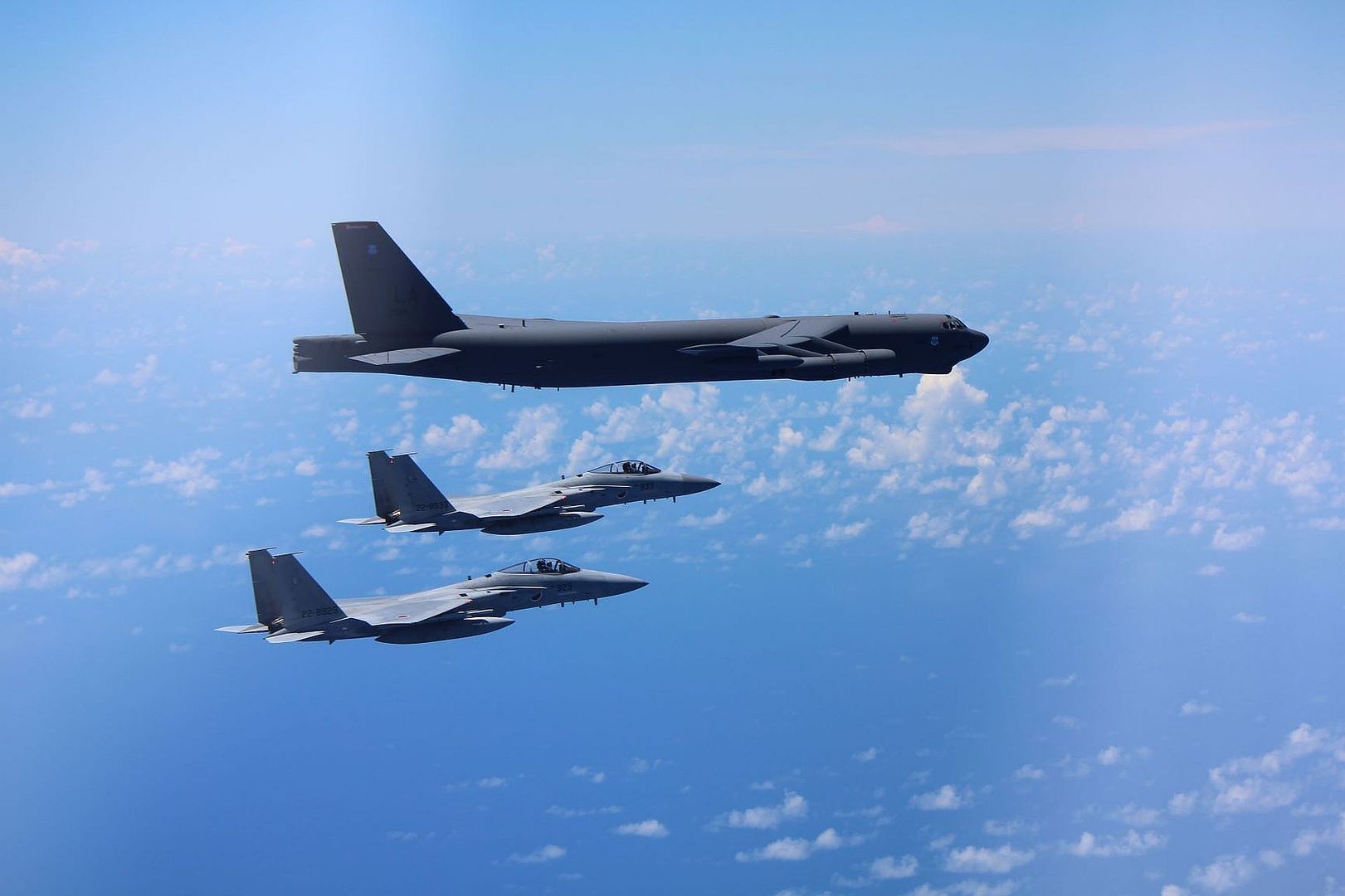
An Indonesian Air Force F-16 flies next to a U.S. Air Force B-52 Stratofortress assigned to the 2nd Bomb Wing, Barksdale Air Force Base, Louisiana, in the Indo-Pacific region, Sept. 1, 2021. This is the first time a B-52 has integrated with the Indonesian Air Force during flight. Bomber Task Force missions demonstrate the credibility of our forces to address a diverse and uncertain security environment. (Courtesy Photos of Indonesian Air Force)

EGLIN AIR FORCE BASE, Fla. --
Three F-15E Strike Eagles from the 85th Test and Evaluation Squadron supported a test as part of the QUICKSINK Joint Capability Technology Demonstration on Aug. 26, 2021.
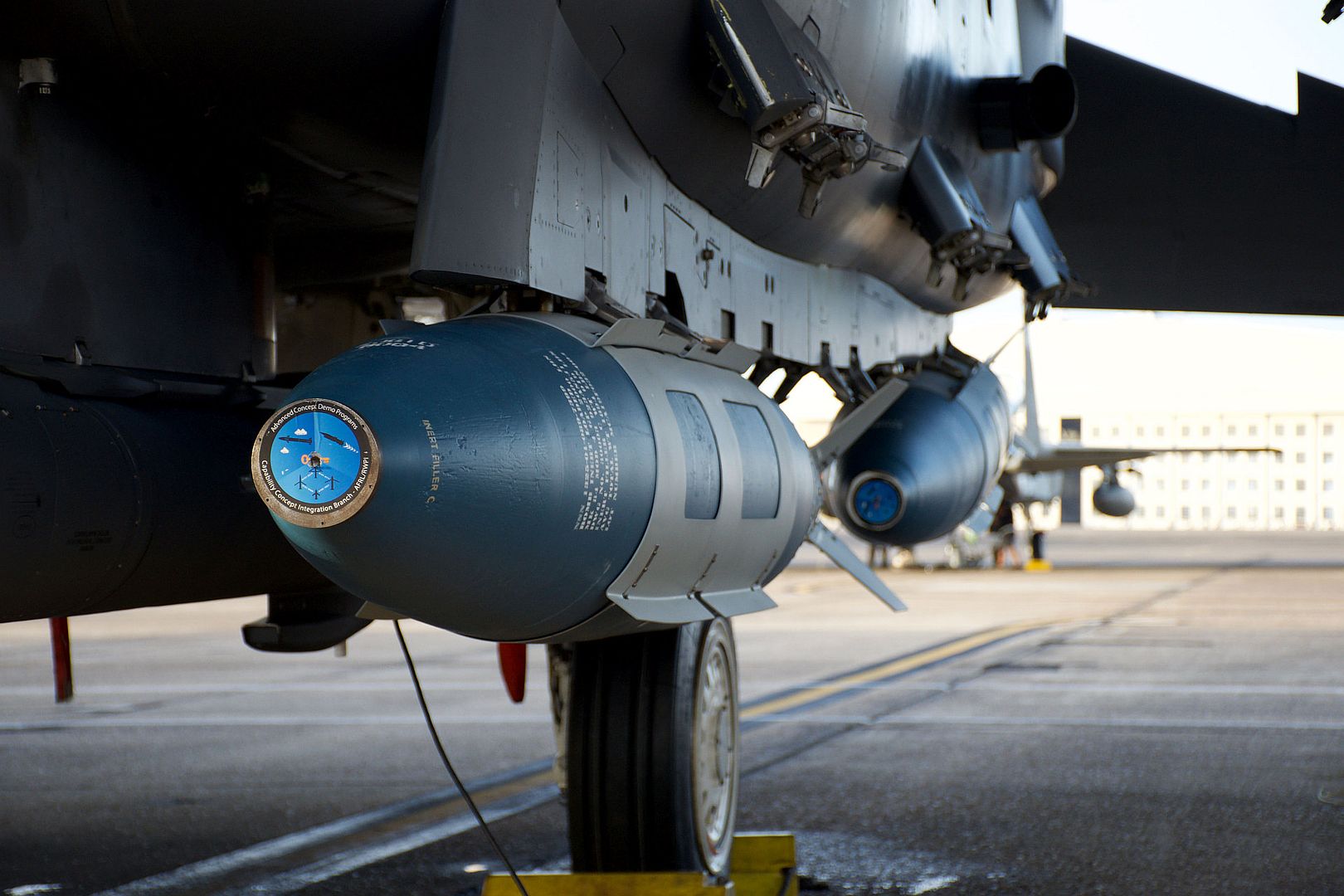
Partnering with the Air Force Research Laboratory, the F-15E crews developed and demonstrated new tactics, techniques, and procedures for employing modified 2,000-pound GBU-31 Joint Direct Attack Munitions on both moving and static maritime targets.
The goal of this test was to validate a new way to employ air-delivered munitions on ships that will change the maritime target lethality paradigm.
“For any large moving ship, the Air Force’s primary weapon is the 2,000-pound laser guided GBU-24,” said Maj. Andrew Swanson, 85th TES F-15E weapons system officer. “Not only is this weapon less than ideal, it also reduces our survivability based on how it must be employed. This munition can change all of that.”
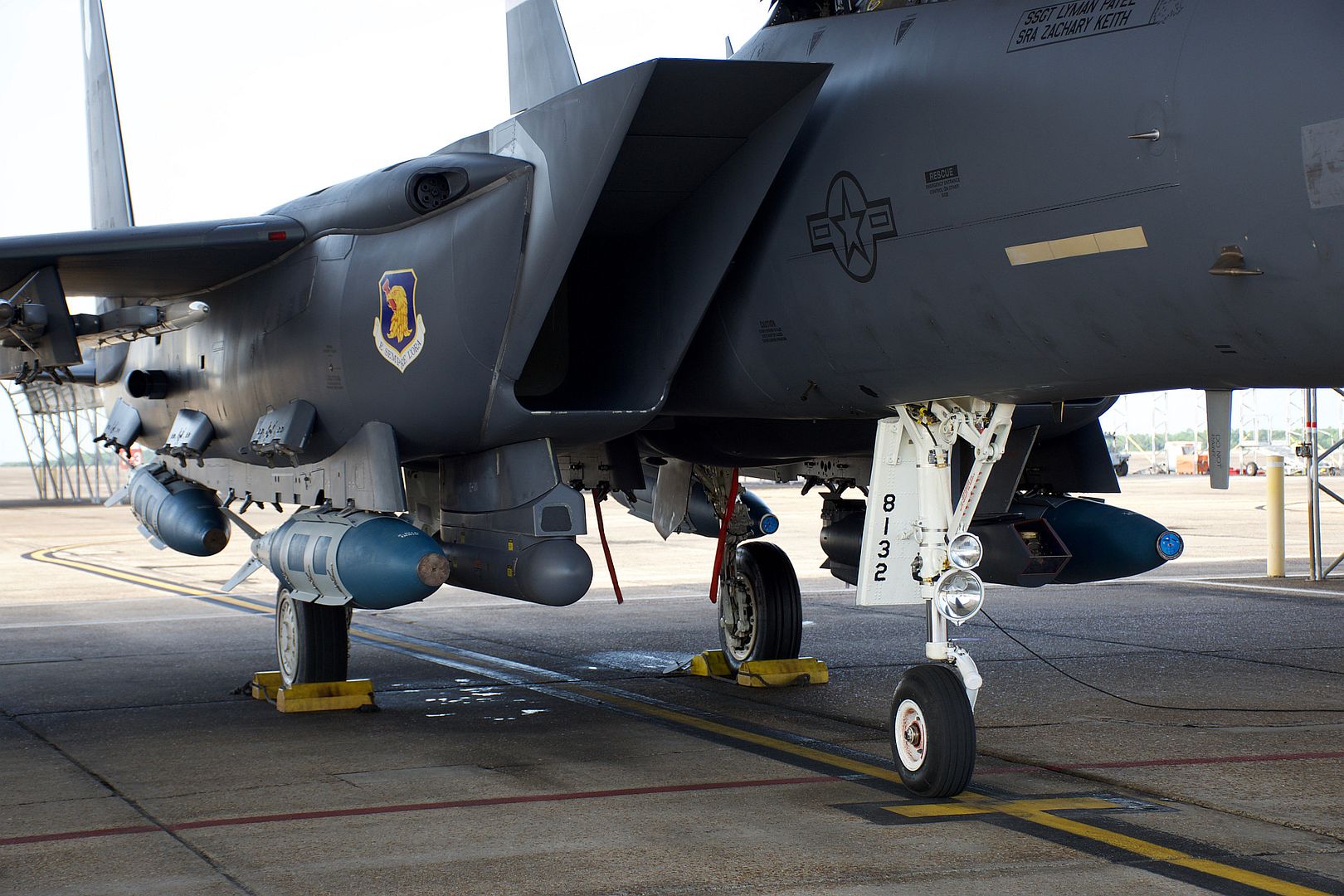
A Navy submarine has the ability to launch and destroy a ship with a single torpedo at any time, but by launching that weapon it gives away the location of the vessel. The QUICKSINK JCTD aims to develop a low-cost method of achieving torpedo-like seaworthy kills from the air.
This test builds on a previous 53rd Wing test conducted last year where the B-52H Stratofortress from the 49th TES dropped JDAMs in order to assess the viability of specific maritime impact conditions.
(U.S. Air Force photos by 1st Lt Lindsey Heflin)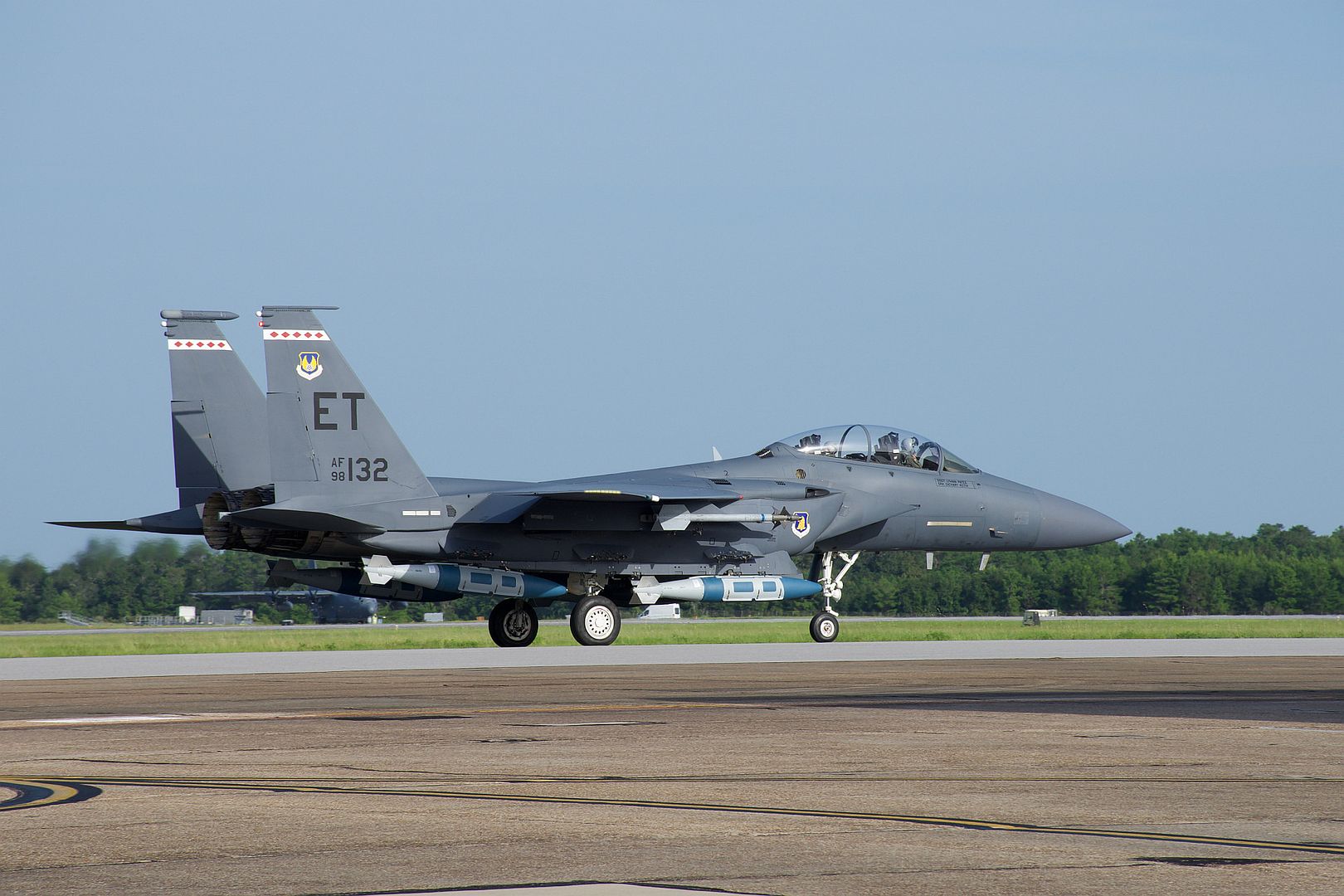
PHILIPPINE SEA (Aug. 26, 2021) A Japan Maritime Self-Defense Force Superhawk lands on the flight deck of the Arleigh Burke-class guided-missile destroyer USS Barry (DDG 52) during MALABAR 2021. Barry is currently on deployment supporting Commander, Task Force 71 (CTF 71)/Destroyer Squadron 15 (DESRON 15), the Navy’s largest forward-deployed DESRON and the U.S. 7th Fleet’s principal surface force. (U.S. Navy photo by Mass Communication Specialist 3rd Class Justin Stack)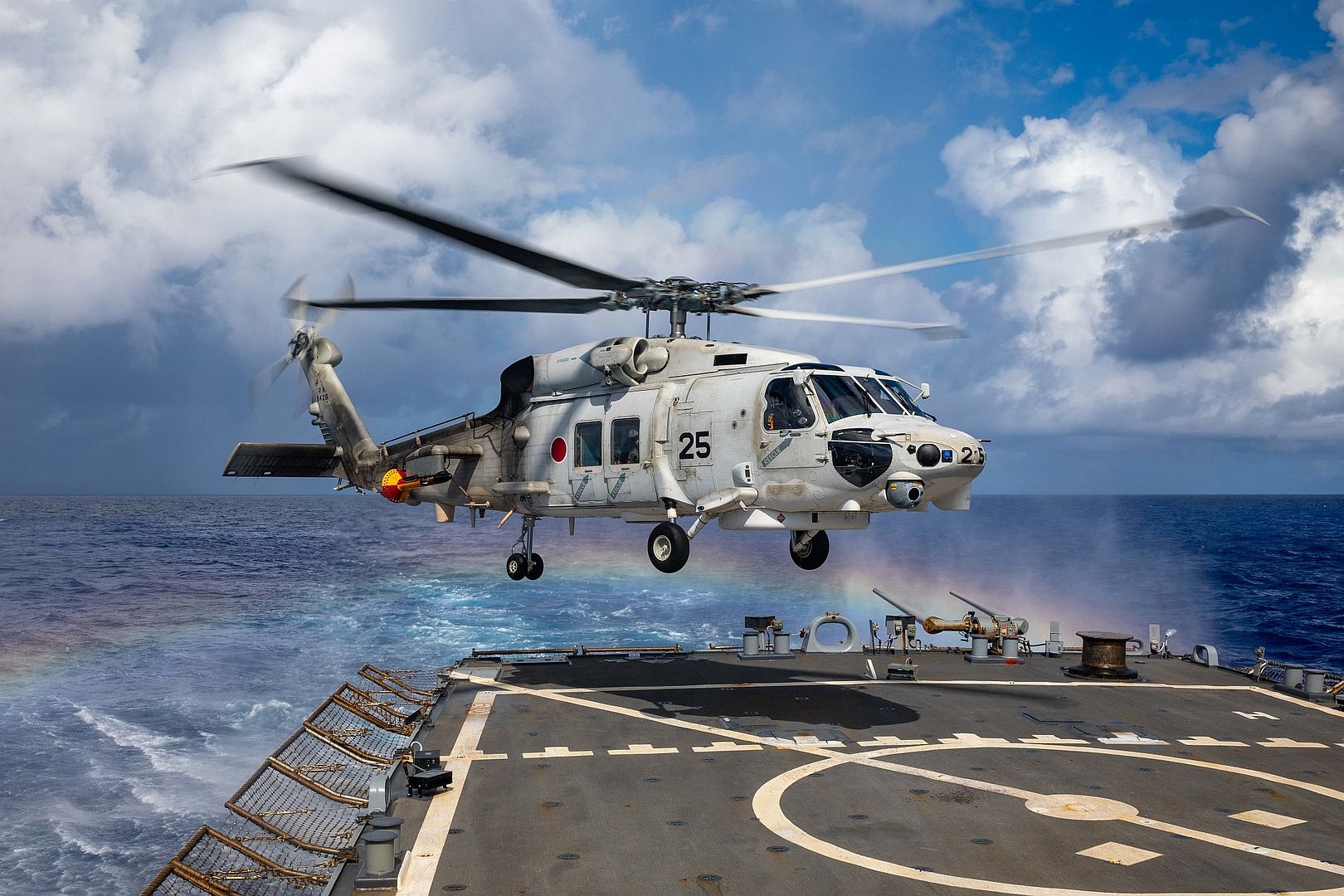
02.09.2021 .
The headquarters of the Aviadarts competition of the International Army Games 2021 summed up the final results of the competition.
Russian pilots took first places in the nominations: bomber, assault, long-range aviation and army aviation on combat and transport-combat helicopters. This made it possible to take first place in the team competition and win the competition cup.
Pilots of the People's Republic of China won the fighter and military transport aviation competitions on the J-10 and Y-9 aircraft.
The crews of the Air Force of the Republic of Belarus won three sets of silver medals in the nominations: assault aviation and army aviation in combat and transport-combat helicopters.
The closing ceremony of the competition and the awarding of the winners and prize-winners will take place at the Dyagilevo airfield on September 4.
(Photos courtesy of the Ministry of Defence of the Russian Federation)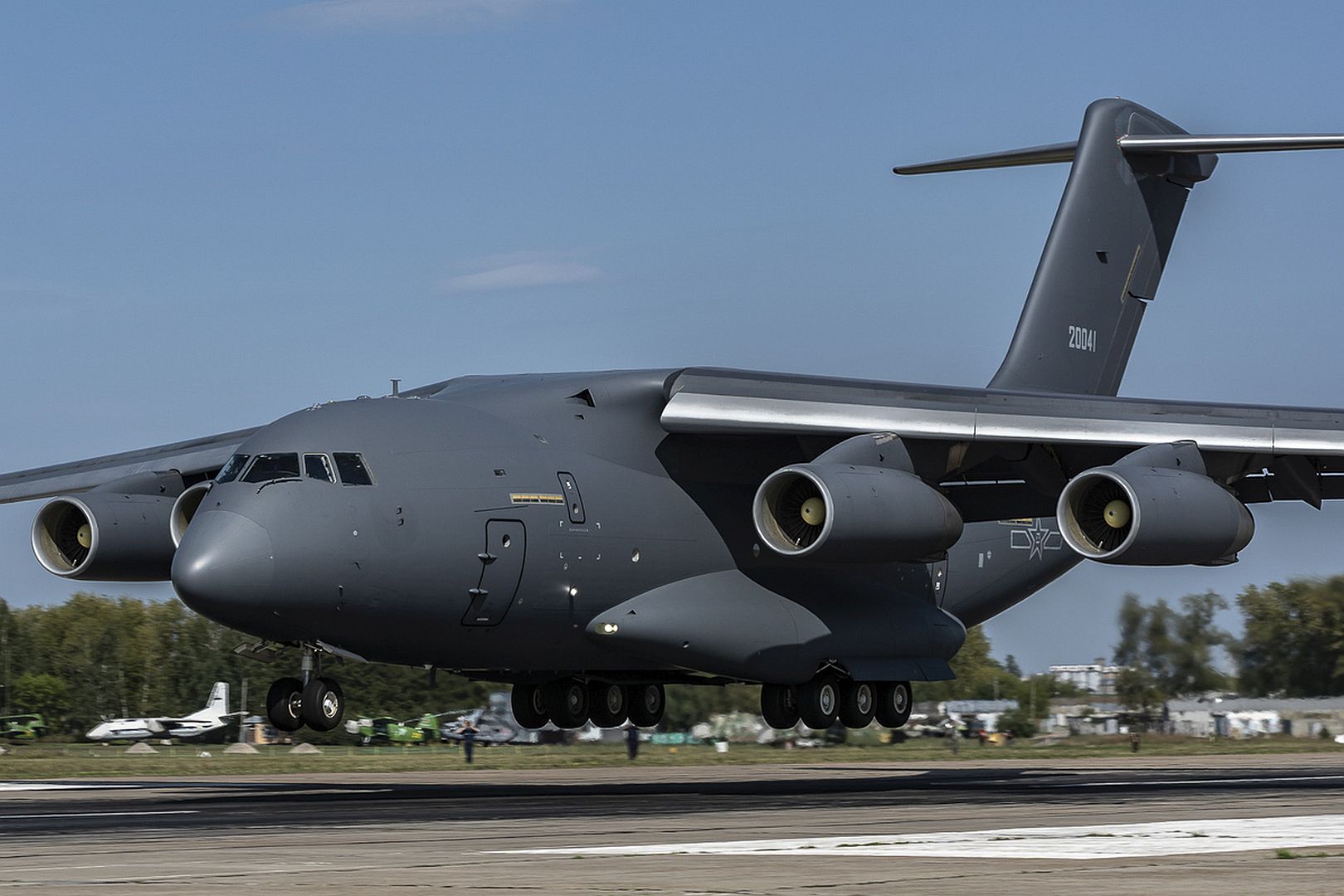
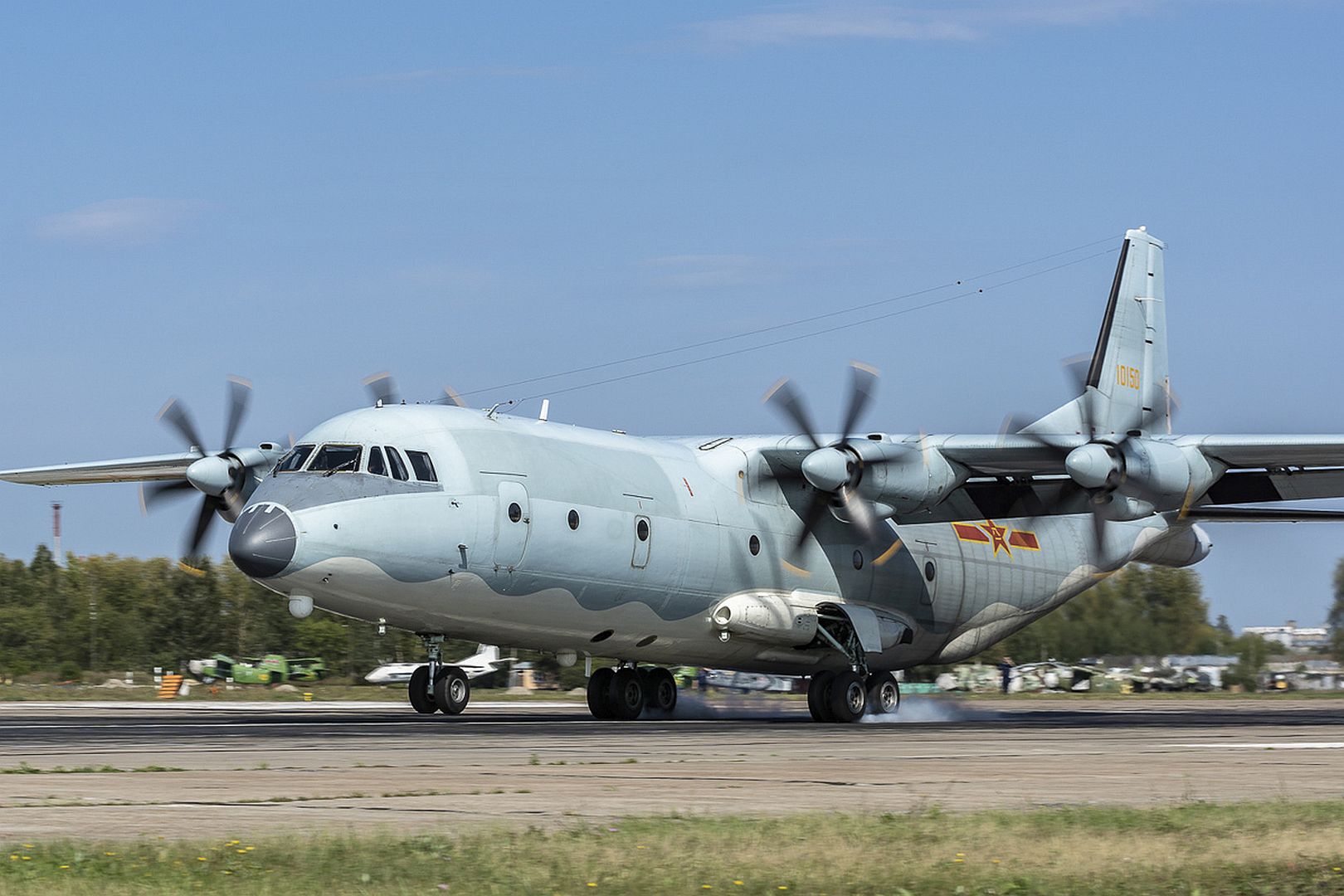
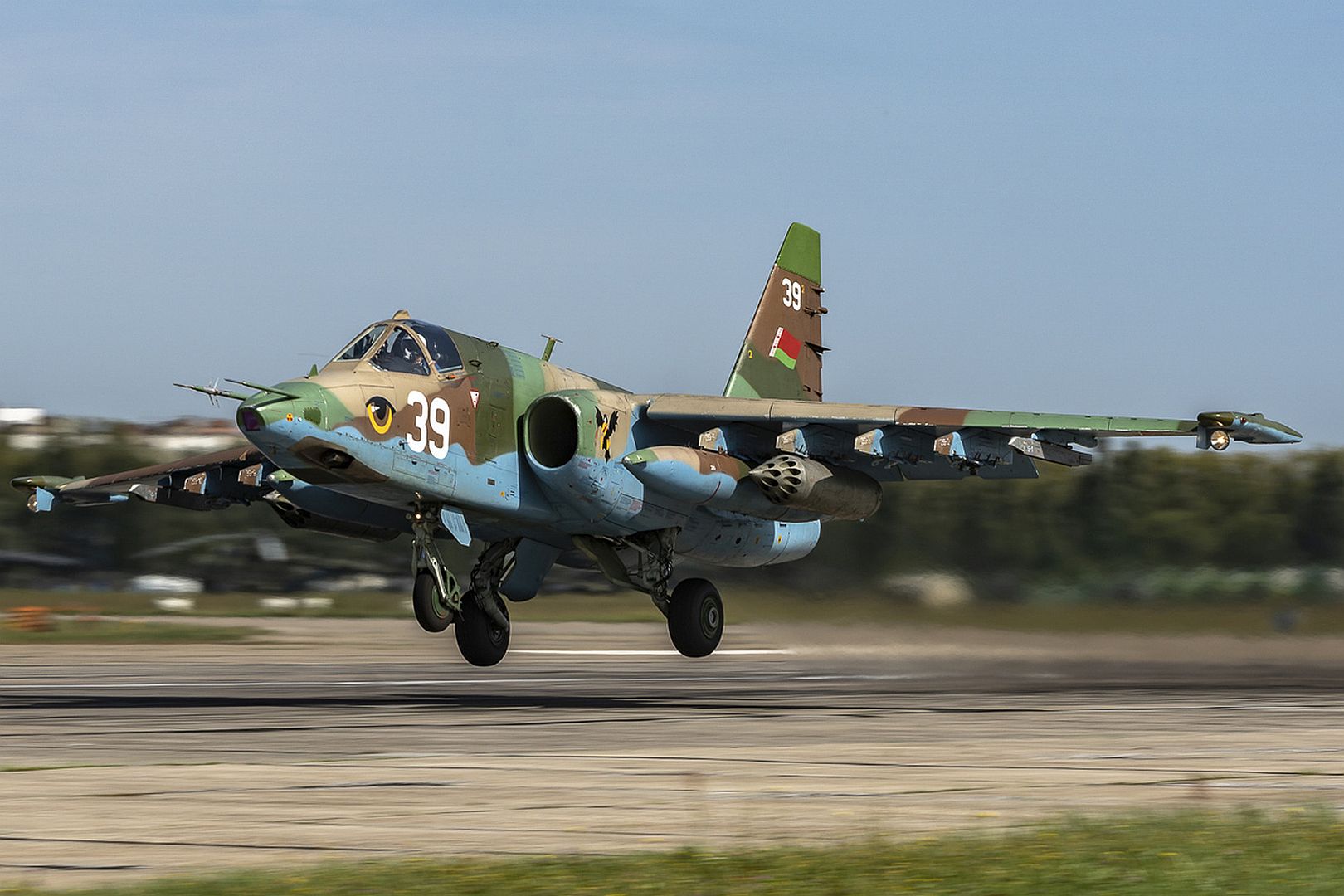

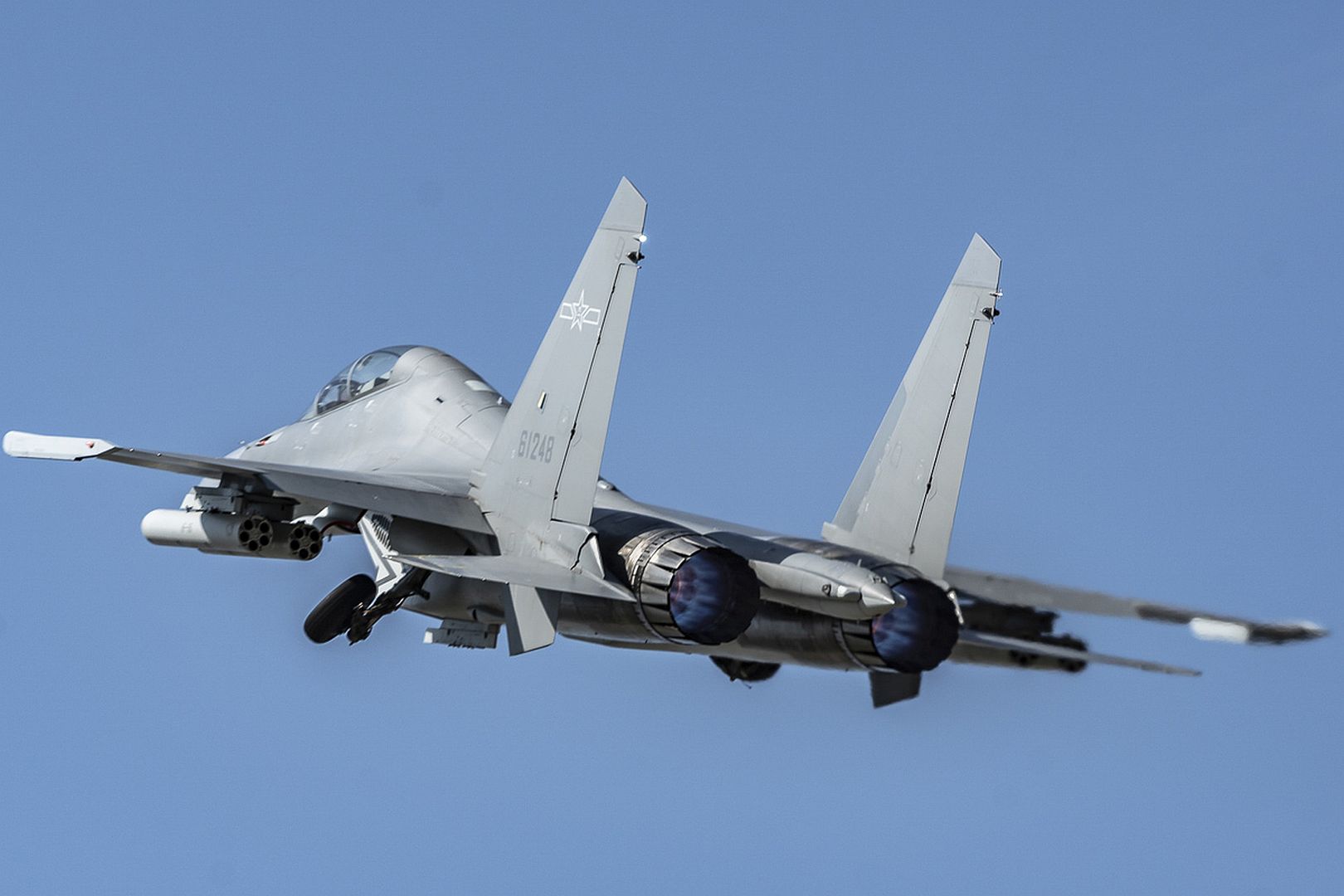
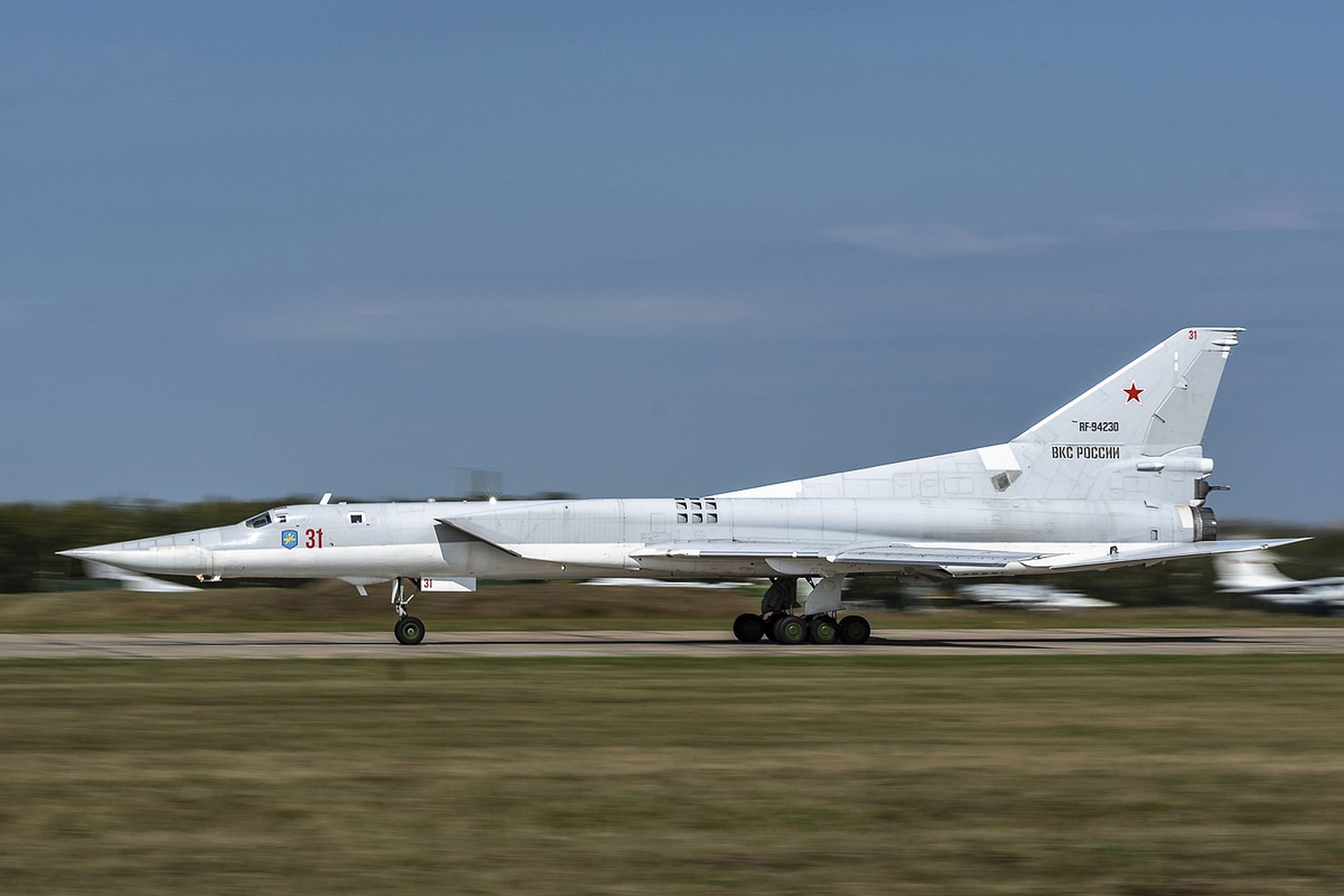
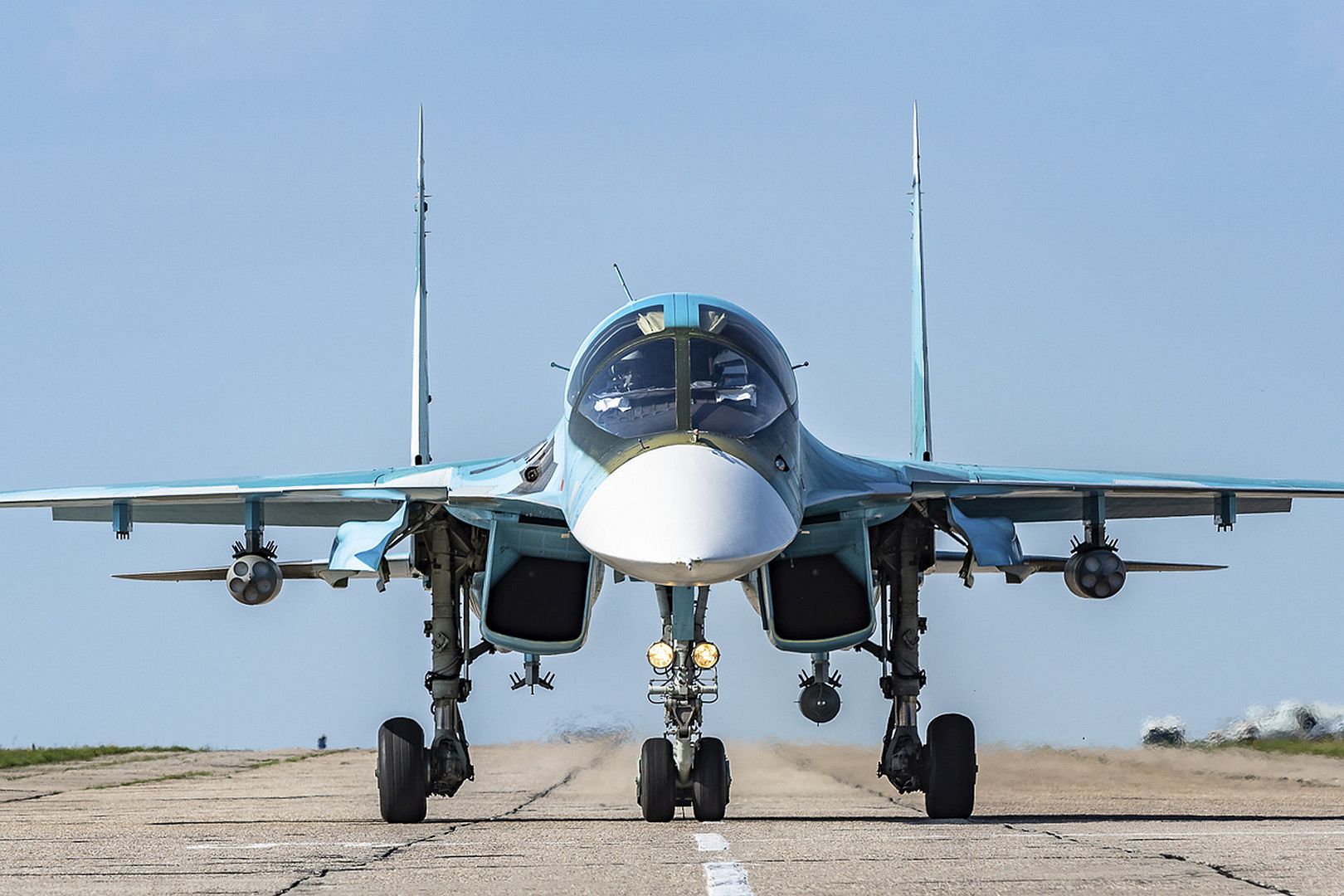
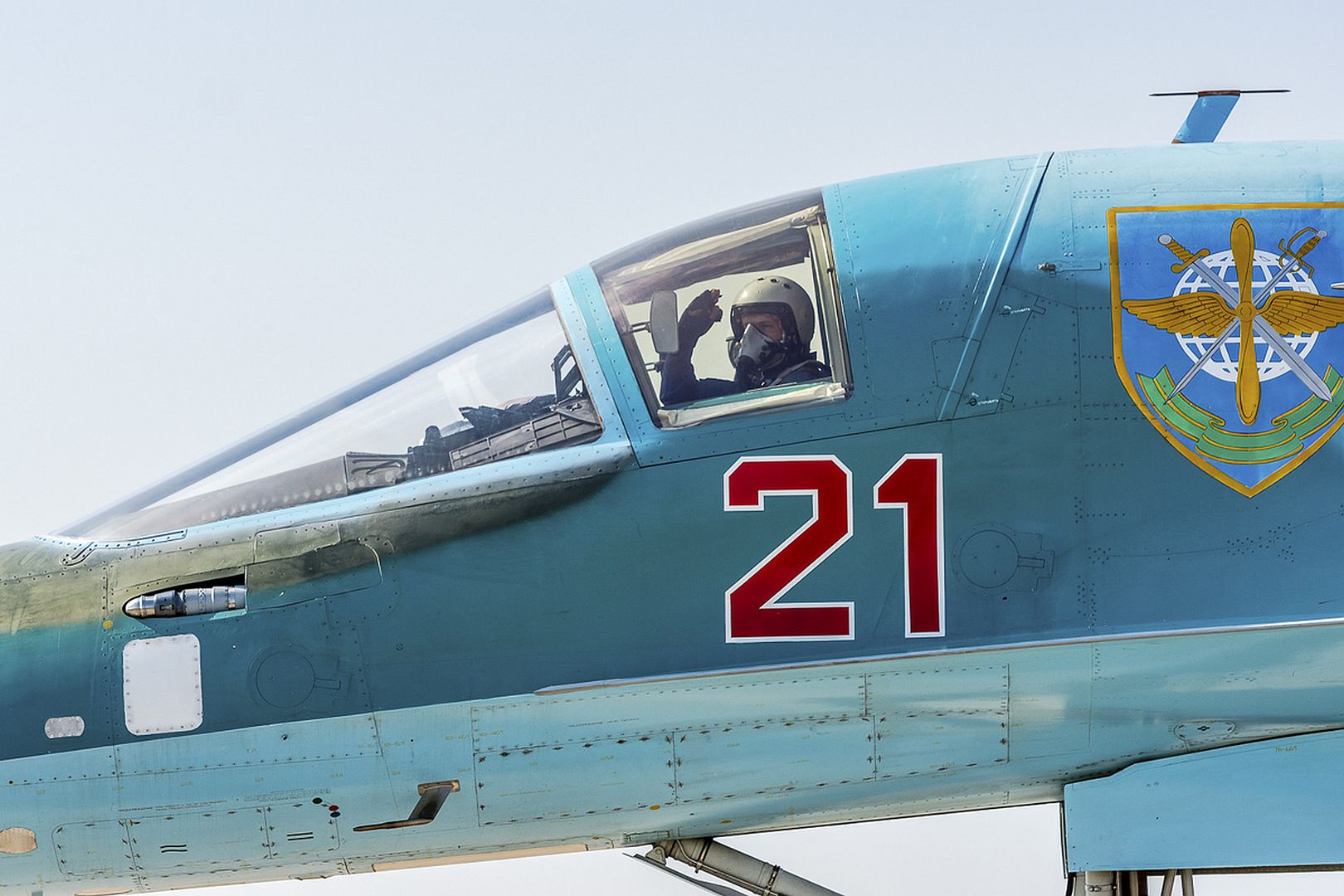
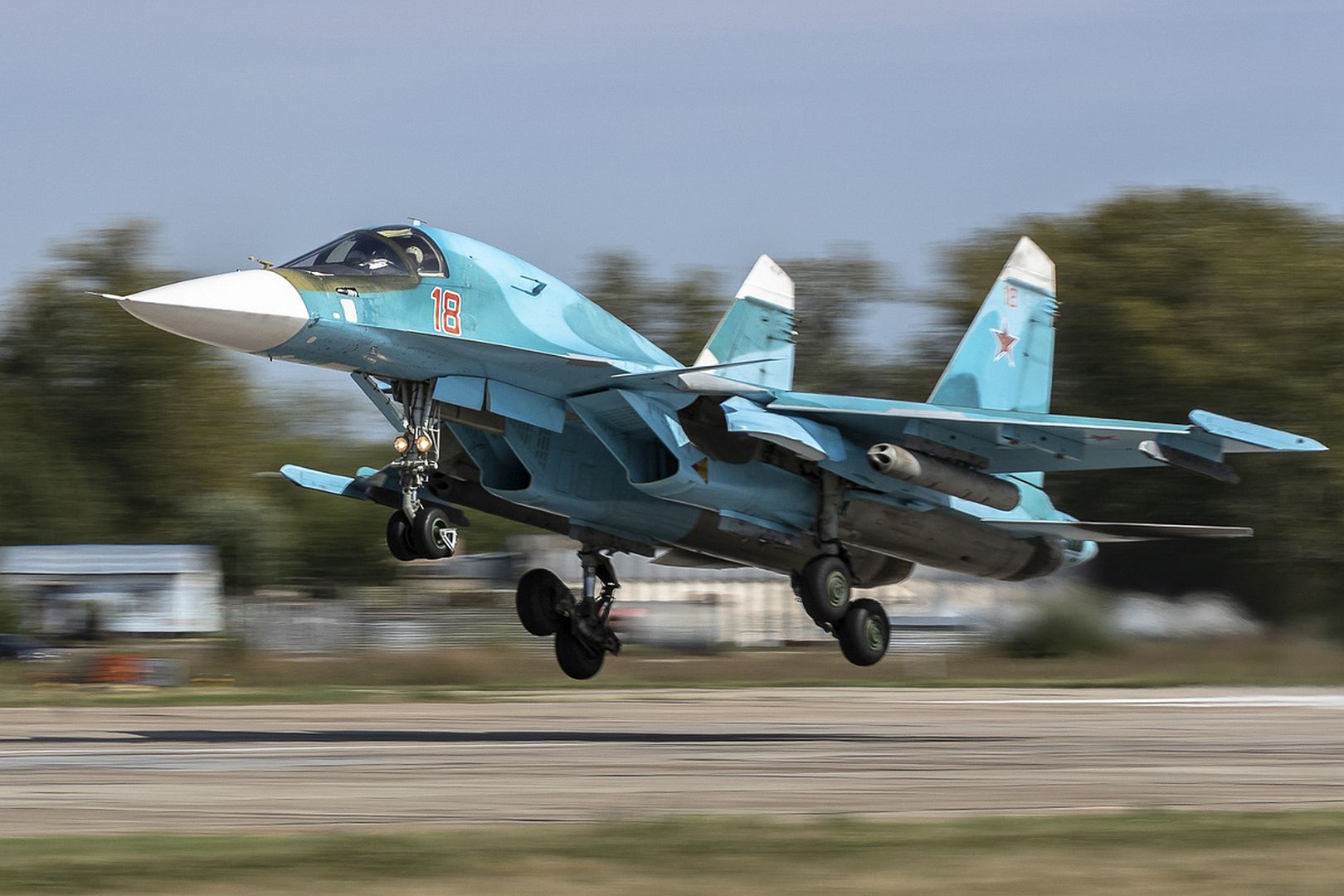
LOS ANGELES – Sept. 2, 2021 – Northrop Grumman Corporation (NYSE: NOC) announced the AGM-88G Advanced Anti-Radiation Guided Missile Extended Range (AARGM-ER), developed under contract with the U.S. Navy, has successfully achieved a Milestone C decision, authorizing the company as the program’s prime contractor the entry into low rate initial production (LRIP).
“The additional capabilities of AARGM-ER, coupled with its high-performance air vehicle, will provide our fleet with the most advanced weapon system to defeat evolving surface-to-air threats,” said Capt. A.C. “Count” Dutko, Navy Program Manager for Direct and Time Sensitive Strike (PMA-242). “Our team has continued to prove the maturity of the system and we are confident AARGM-ER is ready to commence low rate production.”
This decision enables the start of the production to support future deployment of the AARGM-ER to the fleet and achievement of initial operating capability.
“AARGM, and now AARGM-ER, is a time-critical capability that protects and enhances the capabilities of the U.S. Navy and the evolving threats they encounter,” said Gordon Turner, vice president, advanced weapons, Northrop Grumman. “We are honored to continue providing advanced suppression and destruction of enemy air defense products to the warfighters with this significant expansion to our missile prime business.”
AARGM-ER is a major upgrade to the existing AARGM missile, currently in production and fielded with the Navy today.
AARGM-ER is being integrated on the Navy F/A-18E/F Super Hornet and EA-18G Growler aircraft as well as the Air Force F-35A, Marine Corps F-35B, and Navy F-35C aircraft.
Northrop Grumman solves the toughest problems in space, aeronautics, defense and cyberspace to meet the ever evolving needs of our customers worldwide. Our 90,000 employees define possible every day using science, technology and engineering to create and deliver advanced systems, products and services.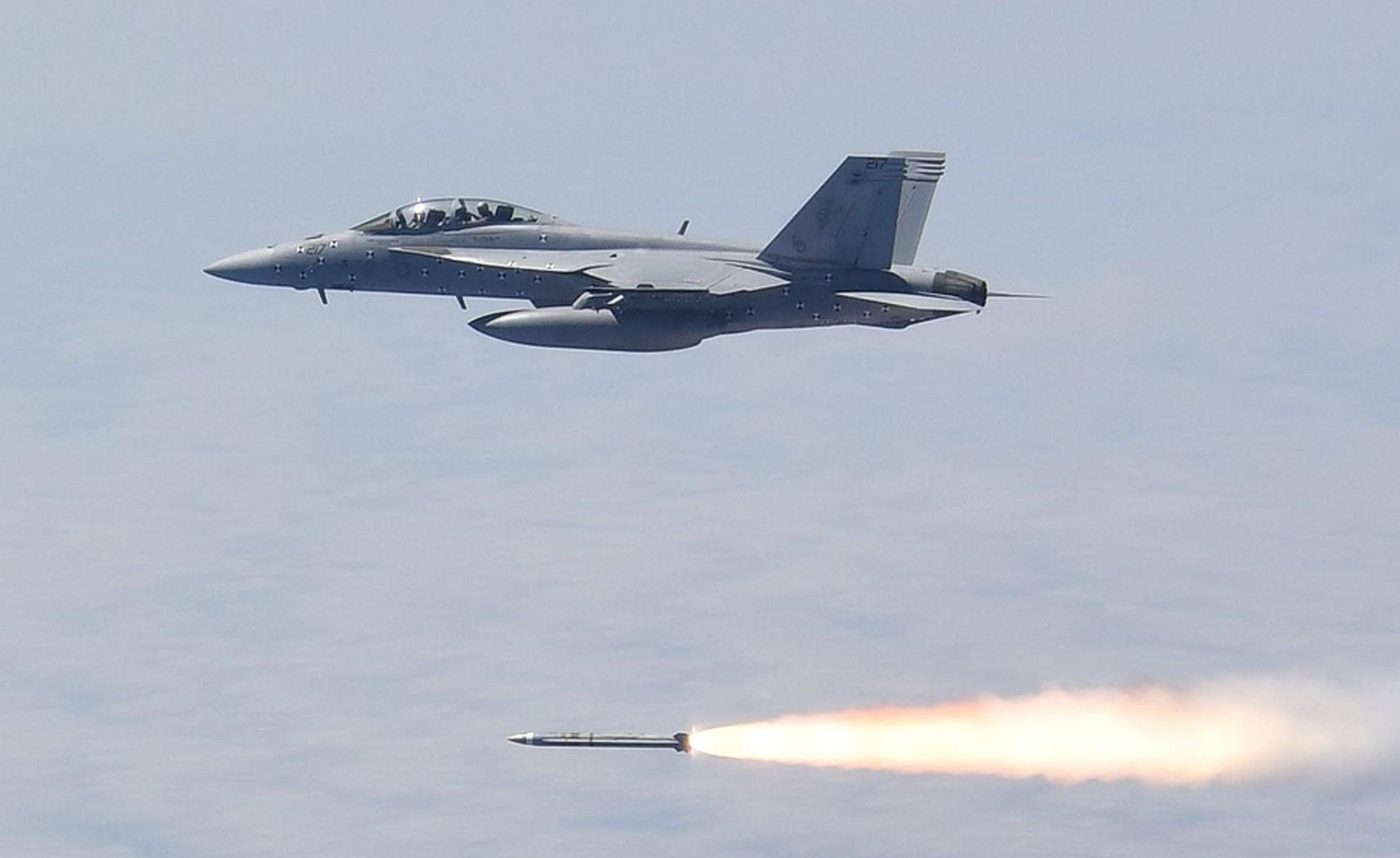
SEATTLE, Sept. 1, 2021 — Boeing [NYSE:BA] and Griffin Global Asset Management today announced the aircraft lessor is expanding its commercial aircraft portfolio with five new 737-8 jets. The purchase is Griffin’s first direct order with Boeing as it sees strategic opportunities to place the airplanes during the market recovery.
“As market conditions rebound, we are finding opportunities to serve our airline customers in innovative ways. An important component of this strategy is providing balanced capacity that meets returning passenger demand. The 737-8 is well-positioned to support this objective, and this order lays a strong foundation for more to come with Boeing and Griffin on future opportunities,” said Ryan McKenna, founder and CEO of Griffin.
Designed and built in Renton, Washington, the 737 MAX family delivers superior efficiency, flexibility and reliability while reducing fuel use and carbon emissions by at least 14% compared to the airplanes they replace. The 737-8 seats up to 189 passengers and can fly 3,550 nautical miles – about 600 miles farther than its predecessor – allowing airlines to offer new and more direct routes for passengers. Every 737 MAX features the new Boeing Sky Interior, highlighted by modern sculpted sidewalls and window reveals, LED lighting that enhances the sense of spaciousness and larger pivoting overhead storage bins.
"Griffin Global Asset Management is building a first-class aircraft leasing business, and we are delighted that they have selected the 737-8 for their single-aisle portfolio. As Griffin places its first direct order with Boeing, we welcome them to the 737 family and look forward to working with the team in the future," said Ihssane Mounir, Boeing senior vice president of Commercial Sales and Marketing.
As a leading global aerospace company, Boeing develops, manufactures and services commercial airplanes, defense products and space systems for customers in more than 150 countries. As a top U.S. exporter, the company leverages the talents of a global supplier base to advance economic opportunity, sustainability and community impact. Boeing’s diverse team is committed to innovating for the future and living the company’s core values of safety, quality and integrity. Learn more at www.boeing.com .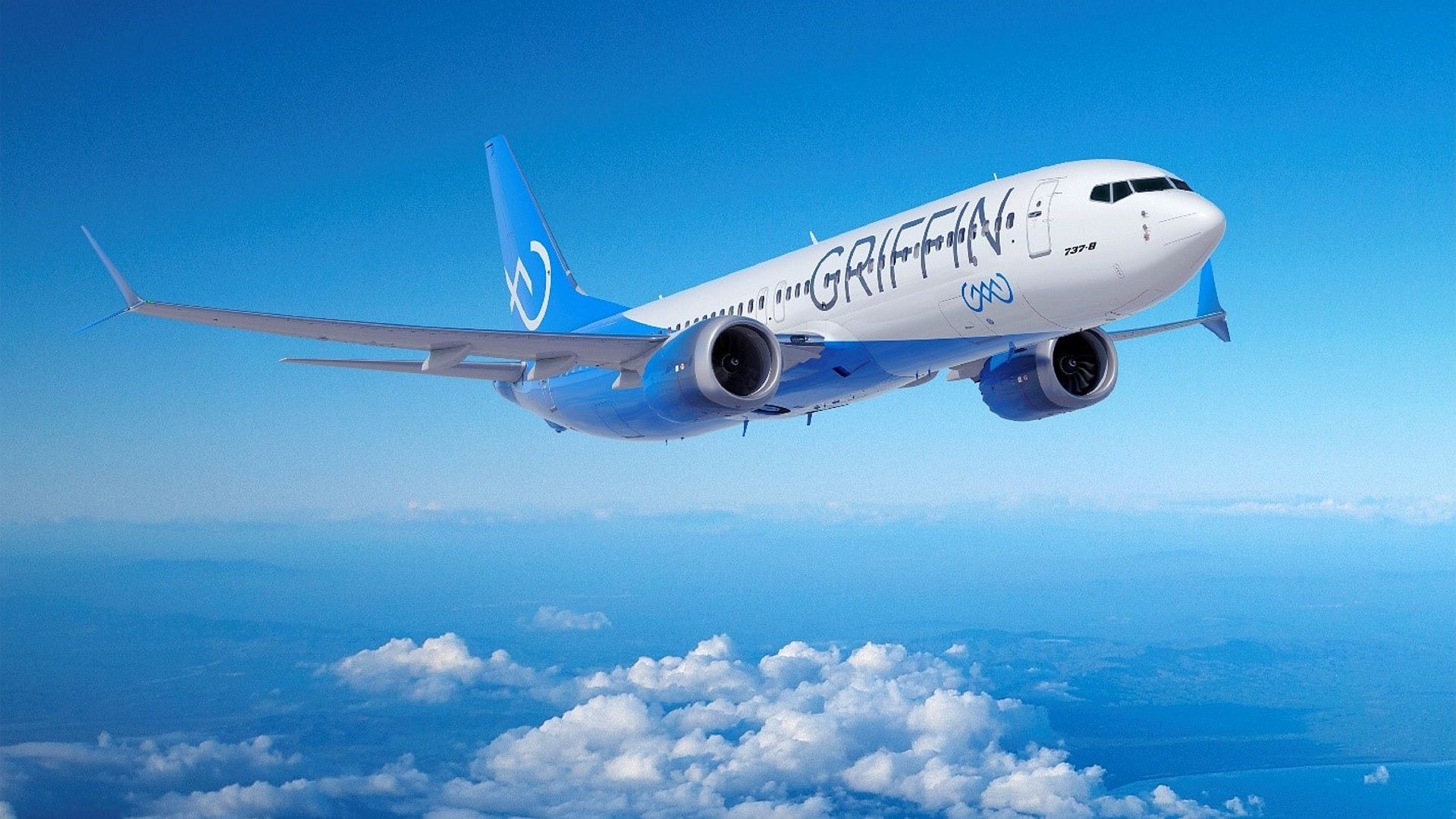
LEEUWARDEN – 02 September 2021 – In cooperation with UK and Netherlands airspace authorities, the Royal Air Force, and the Royal Netherlands Air Force (RNLAF), General Atomics Aeronautical Systems, Inc. (GA-ASI) flew a company-owned, MQ-9B SeaGuardian® Remotely Piloted Aircraft (RPA) today from RAF Waddington across the North Sea to Leeuwarden Air Base in the Netherlands, completing a two-day series of flights between the two airspaces.
This multi-day demonstration displayed SeaGuardian's maritime surveillance capabilities in support of international allies. SeaGuardian returned to RAF Waddington at the conclusion of the event.
The flight is part of a maritime demonstration series that began in August and continues through September. The goal of the flight series is to showcase the many operational capabilities of the MQ-9B, including the platform’s advanced maritime Intelligence, Surveillance and Reconnaissance (ISR), Detect and Avoid System (DAAS), industry-leading endurance, and interoperability with NATO partners.
The RNLAF has ordered four MQ-9A RPA and the first is expected to be delivered to Leeuwarden later this year.
“Today’s flight is a major milestone for us. It demonstrates the ability of the MQ-9 to operate in our airspace and validates the procedures for air traffic control. It also familiarizes the air traffic controllers with Remotely Piloted Aircraft, which is an opportunity we have not had before,” said Lieutenant-Colonel Boudewijn Roddenhof, commander of the RNLAF’s 306 squadron, which will operate the new MQ-9A Reapers.
“We’re thrilled to showcase the game-changing capabilities of our RPA for the Royal Netherlands Air Force,” said Robert Schoeffling, vice president of International Strategic Development for GA-ASI. “We appreciate the international cooperation we’ve received from the RAF, the RNLAF and civil aviation authorities such as the UK Civil Aviation Authority. Our MQ-9B series is built and equipped to meet certification standards that will allow it to fly in non-segregated airspace.”
The flight to Leeuwarden was conducted as Operational Air Traffic, under the control of UK military air traffic controllers at Swanwick, up to the boundary between the UK’s and the Netherlands’ controlled airspace. At the agreed crossing point, Dutch military air traffic controllers took responsibility for the flight.
Next up, SeaGuardian will participate in the UK-led Joint Warrior exercise, which will showcase how the MQ-9B’s maritime capabilities can be integrated with other air, surface and land platforms. SeaGuardian’s maritime capability includes a multi-mode maritime surface-search radar with Inverse Synthetic Aperture Radar (ISAR) imaging mode, an Automatic Identification System (AIS) receiver, Electronic Surveillance Measures (ESM) along with the standard High-Definition, Full-Motion Video sensor equipped with optical and infrared cameras.
The flights also demonstrate GA-ASI's revolutionary Detect and Avoid System, a safety and situational awareness enhancement designed to support MQ-9B flight in non-segregated airspace worldwide. DAAS enables MQ-9B to operate among civilian aviation traffic in the national airspace, unlike any other aircraft in its class. SeaGuardian is the maritime version of the MQ-9B SkyGuardian®.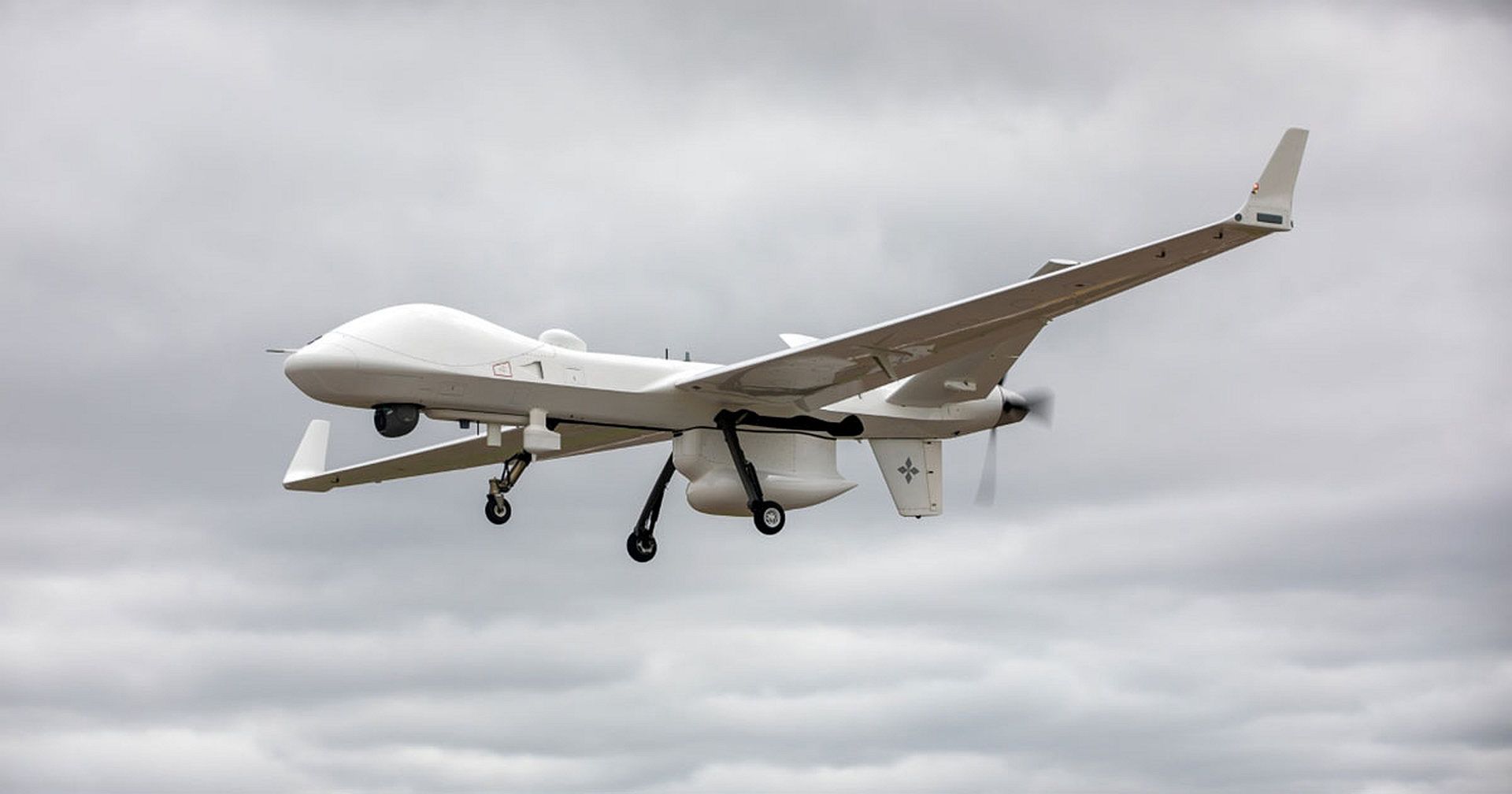
-
 Main AdminRepublic of Singapore Air Force personnel perform pre-flight checks on a RSAF A330 Multi-Role Tanker Transport aircraft next to a row of U.S. Air Force cargo aircraft on the flightline of Spangdahlem Air Base, Germany, Aug. 29, 2021. From Aug. 27-30, the 52nd Fighter Wing and 726th Air Mobility Squadron partnered with Singapore Armed Forces personnel to aid Afghanistan evacuation operations. (U.S. Air Force photo by Tech. Sgt. Maeson L. Elleman)
Main AdminRepublic of Singapore Air Force personnel perform pre-flight checks on a RSAF A330 Multi-Role Tanker Transport aircraft next to a row of U.S. Air Force cargo aircraft on the flightline of Spangdahlem Air Base, Germany, Aug. 29, 2021. From Aug. 27-30, the 52nd Fighter Wing and 726th Air Mobility Squadron partnered with Singapore Armed Forces personnel to aid Afghanistan evacuation operations. (U.S. Air Force photo by Tech. Sgt. Maeson L. Elleman)
Gen Mark Kelly, Commander of Air Combat Command, leads a two-ship formation of F-15s Eagles from the 53rd Test Wing near Eglin Air Force Base, Fla, Sept. 1, 2021. Gen Kelly, an Eagle pilot for nearly 30 years, flew the Air Force’s newest fighter, the F-15EX Eagle II. (U.S. Air Force photo by Tech. Sgt. John Raven)
JOHNSTOWN, Pennsylvania, Sept. 2, 2021 -- Lockheed Martin announced today it would bring new F-16 manufacturing work to its facility in Johnstown, Pennsylvania. The work will generate 80 new jobs in the city and the company plans to lease a new building to accommodate it.
Wayne Davis, director at Lockheed Martin’s Johnstown site, says Lockheed Martin continues to see demand for new F-16s around the world, requiring development of additional parts manufacturing sites to ensure it can keep up with demand.
“Johnstown’s selection for this new work reflects the highly skilled workforce in the area, a record of quality production and the space available to expand,” Davis said. “We are proud to grow our presence in Johnstown and to contribute to the acceleration of jobs.”
F-16 parts to be produced in Johnstown include the aft engine access covers, engine access doors, F-1 fuel tank, and inlet. Upon completion in Johnstown, the parts will be shipped to Greenville, South Carolina, for final assembly and integration into the F-16s on the production line. This is in addition to F-16 component and sub-assembly work already performed at the site today.
Early work in Johnstown will kick off this year, with the bulk of hiring and other significant efforts beginning in 2022. In addition to the F-16 work, the Johnstown facility also provides parts and services for the F-35 and F-22 fighter jets, and the C-130 military transport aircraft.
In addition to the nearly 400 jobs already in place at the site today, Lockheed Martin maintains a strong presence in the Johnstown community, giving more than $42,000 to local organizations and efforts last year.
Meanwhile, in Canada... Have a look at Iraqi Airways' first #A220 making its first appearance in the airline's livery!
(Photo courtesy of Airbus)
London, UK – September 3, 2021 - Yesterday evening, Thursday, 2 September 2021 saw an important debut for London City Airport. At 5:45 pm, an Embraer E190-E2 made its first commercial flight into the iconic airport in the centre of the British political and financial capital. Registered HB-AZG, the Helvetic Airways aircraft flew from Zurich to London in 1 hour 20 minutes, also reastablishing an essential link for the global financial community.
Flight LX 456, operated by Helvetic Airways on behalf of its partner company Swiss International Air Lines, was welcomed by a water salute from London City Airport’s fire service. On board the sold out flight were 110 passengers, including representatives of the international media, business travellers, as well as those visiting friends and family.
Reestablishing connectivity between the UK and Switzerland
Commenting on the arrival, LCY’s Chief Operating Officer Alison FitzGerald said:
"Welcoming Swiss/Helvetic back to London City, and in the newest LCY capable aircraft, Embraer’s E190-E2, is a significant milestone for London City. It demonstrates how we are collaborating with manufacturers and airlines to introduce more low emissions, low noise aircraft to our airport, as well as reestablishing a vital business connection which we believe will go from strength-to-strength as the UK Government begins to further reduce barriers to travel.Our ambition is to be one of the most sustainable airports of our size in Europe, and it is my expectation that we will be welcoming more of these aircraft with more airlines as the industry recovers from COVID-19."
Embraer E190-E2: the perfect aircraft for London City
With LCY’s runway length of only 1,508 metres and descent angles of up to 5.5 degrees, the Embraer E2 is particularly suitable for operations at the legendary Thames-side airport.
“Thanks to a reduction of almost 20% in fuel consumption and a noise footprint at take-off 63% smaller than Embraer’s previous generation aircraft, the E190-E2 not only delivers significant reductions in emissions, but also a much quieter experience for local residents,” enthused Cesar Perreira, Embraer’s Vice President of Sales and Marketing EMEA, shortly before the first flight left Zurich for London.
It should be noted that Embraer aircraft account for nearly 90% of all movements at the airport. At the same time, the E190-E2 nearly doubles the available range from LCY to more than 4,000 km, for the first time bringing destinations such as Istanbul, Casablanca and Moscow within reach.
Helvetic Airways: the first E2 operator into London City
‘With this world premiere, we are particularly proud to be able to offer a product of the highest level in terms of comfort, silence and sustainability. We are convinced that the Embraer E2 is suited perfectly to the requirements of business customers flying between the financial centres of London and Zurich,’ said Tobias Pogorevc, CEO of Helvetic Airways, during the inaugural flight.
With the coronavirus pandemic bringing a more regional emphasis to air transport along with a trend towards the use of smaller aircraft types, Helvetic Airways is now ideally equipped both to provide reliable and cost-effective flight operations and to take full and fruitful advantage of the new opportunities currently offered in markets worldwide. With a fleet of 12 Embraer E2 aircraft, Helvetic Airways is currently the largest Embraer E-Jets operator in the world, strengthening its position as a regional airline based in Switzerland, Europe and beyond.
About Helvetic Airways
Swiss regional airline Helvetic Airways provides a range of short and medium-haul air services from its hubs at Zurich Airport and EuroAirport Basel-Mulhouse-Freiburg. The carrier deploys its 16 Embraer E Jet aircraft (8 E190-E2, 4 E195-E2 und 4 E190-E1) on scheduled, charter and wet-lease flights. Eight Helvetic Airways Embraer E190-E1s and E2s are currently operated on behalf of Swiss International Air Lines under a long-term wet-lease agreement.
The Helvetic Airways workforce numbers some 400 employees. The company has its own maintenance hangar and operation at Zurich Airport, which is also home to its corporate head office.
Helvetic Airways has been working closely with Horizon Swiss Flight Academy AG (www.horizon-sfa.ch), based in Kloten, since 2008. Both companies are part of the Helvetic Airways Group, which is domiciled in Freienbach, Switzerland.
Thursday, September 2 marks the receipt of a new A330 Phoenix by the Air and Space Army on the Base aérienne 125 Istres.
The Phoenix is designed to meet the various tasks entrusted to the Air Force and Space. Its projection capacity all over the world, allows France to defend its interests around the world. The A330 has made a major contribution to Operation #APAGAN by making several ′′ back loops ′′ between the United Arab Emirates and France to evacuate nationals in Afghanistan.
Delivered by the Directorate General for Arms (DGA), this fifth A330 Phoenix, No. 45, completes the fleet of the 31th Aerial Supply and Strategic Transport Wing (EARTS) which continues to accompany the rise in power of the Armies Hub in Istres and which is also preparing to host Transport Squadron (ET) 3/60 Esterel under the command of the strategic air forces (FAS).
(Photos courtesy of the Armée de l'Air et de l'Espace)
-
 Main AdminThe British Royal Navy aircraft carrier HMS Queen Elizabeth of the United Kingdom Carrier Strike Group (CSG) 21 visits Commander, Fleet Activities Yokosuka Sept. 4, 2021. The deployment is the U.K.’s first by a carrier strike group in the Indo-Pacific in almost 25 years and marks a historic achievement in the strengthening of ongoing partnerships the U.K. has with the U.S. and Japan. (U.S. Navy photo by Mass Communication Specialist 2nd Class Ashley M.C. Estrella)
Main AdminThe British Royal Navy aircraft carrier HMS Queen Elizabeth of the United Kingdom Carrier Strike Group (CSG) 21 visits Commander, Fleet Activities Yokosuka Sept. 4, 2021. The deployment is the U.K.’s first by a carrier strike group in the Indo-Pacific in almost 25 years and marks a historic achievement in the strengthening of ongoing partnerships the U.K. has with the U.S. and Japan. (U.S. Navy photo by Mass Communication Specialist 2nd Class Ashley M.C. Estrella)
PACIFIC OCEAN (Sept. 5, 2021) An EA-18G Growler, assigned to the “Gauntlets” of Electronic Attack Squadron (VAQ) 136, launches off of the flight deck of Nimitz-class aircraft carrier USS Carl Vinson (CVN 70), Sept. 5, 2021. Carl Vinson Carrier Strike Group is on a scheduled deployment in the U.S. 7th Fleet area of operations to enhance interoperability with allies and partners while serving as a ready-response force in support of a free and open Indo-Pacific region. (U.S. Navy photo by Mass Communication Specialist Seaman Mason Congleton)
A U.S. Air Force B-52 Stratofortress assigned to the 2nd Bomb Wing, Barksdale Air Force Base, Louisiana, flies next to two Indonesian Air Force F-16s during a Bomber Task Force (BTF) deployment in the Indo-Pacific region, Sept. 1, 2021. This is the first time a B-52 has integrated with the Indonesian Air Force during flight. BTF missions demonstrate the credibility of our forces to address a diverse and uncertain security environment. (U.S. Air Force photo by Tech. Sgt. Matthew Lotz)
Melbourne, Florida, September 3, 2021 – Embraer today announced it has delivered its 1,500th business jet, an impressive accomplishment achieved in only two decades, while the industry average to reach this mark is 34 years. The milestone aircraft is a Phenom 300E, the best-selling light jet for nine years in a row, which was delivered to Haute Aviation, a Swiss company focused on charter, brokerage, and aircraft management.
“We are honored to announce Embraer Executive Jet’s 1,500th delivery. This landmark delivery to Haute Aviation reflects our commitment to delivering the ultimate experience in business aviation,” said Michael Amalfitano, President & CEO of Embraer Executive Jets. “With our industry-leading portfolio, we always seek to redefine the customer experience through technology, performance, and comfort. We are thrilled to deliver this experience to Haute Aviation and enthusiastically welcome them as a first-time Embraer customer.”
Looking to diversify the company’s portfolio, which includes a single-engine turboprop and ultra-long range aircraft, Haute Aviation decided to expand operations with the Phenom 300E. The aircraft, with a non-stop range of 2,010 nautical miles (3,724 km), will allow customers from Switzerland to fly domestically, across Europe, and throughout the world. Haute Aviation is based out of the Saanen-Gstaad airport, which is nestled in the mountainous region of the Swiss Alps and often considered a challenge to operators due to its location. However, with superb runway and climb capabilities, the Phenom 300E demonstrates unmatched performance throughout the area with technologies such as Synthetic Vision System (SVS) to provide enhanced situational awareness and runway overrun awareness and alerting system (ROAAS)―the first technology of its kind to be developed and certified in business aviation.
Haute Aviation also cited speed as a deciding factor when it came to the aircraft, as the Phenom 300E is the fastest and longest-ranged light jet, capable of reaching Mach 0.80, allowing its customers to reach their destination quicker and with superior comfort. In fact, the Phenom 300E can reach all of Europe from Switzerland with all seats full, faster than any other aircraft in the segment.
“For Haute Aviation, the new Phenom 300E is the best product on the market to complete the range of our fleet,” said Catherine Tamagni, Head of Marketing and Communication at Haute Aviation. “We believe the aircraft’s two engines will suit our passengers who prefer not to fly in a single-engine aircraft, as this allows for uncompromised range and payload performance. However, we are most confident that our charter clients will be impressed by the fantastic cabin with its best-in-class altitude, low noise and extreme comfort. The Phenom 300E also has one of the best lavatories in its category as it’s fully enclosed with two full-size windows and is certified for takeoff and landing. We are looking forward to introducing the Phenom 300E, as well as growing our partnership with Embraer.”
With over 950 customers flying 1,500 aircraft in more than 80 countries, Embraer’s executive aviation business has accumulated an annual growth rate of 22% since 2002, when the first executive jet model was delivered. In 2020 alone, one in every 4 small and midsize cabin jets delivered was an Embraer Phenom or Praetor.
-
 Main AdminA Coast Guard Aviation Training Center Mobile aircrew accompanied by a Coast Guard Marine Safety Center salvage engineering response team conducts a damage assessment overflight over Southeast Louisiana, Sep. 7, 2021. The Coast Guard SERT observed grounded vessels throughout Venice, Port Fourchon, Grand Isle, Larose and Houma, Louisiana. (U.S. Coast Guard photo by Petty Officer 3rd Class Gabriel Wisdom)
Main AdminA Coast Guard Aviation Training Center Mobile aircrew accompanied by a Coast Guard Marine Safety Center salvage engineering response team conducts a damage assessment overflight over Southeast Louisiana, Sep. 7, 2021. The Coast Guard SERT observed grounded vessels throughout Venice, Port Fourchon, Grand Isle, Larose and Houma, Louisiana. (U.S. Coast Guard photo by Petty Officer 3rd Class Gabriel Wisdom)
The Italian Air Force’s aerobatics team “Frecce Tricolori” performs its signature flag-themed routine behind a U.S. Army CH-47 Chinook helicopter on static display during the 2021 Slovak International Air Fest held in Malacky, Slovakia, Sept. 5, 2021. The Chinook was crewed by members of B Company “Diesel,” 2nd General Support Aviation Battalion, 1st Aviation Regiment, 1st Combat Aviation Brigade and represents the U.S. commitment to its NATO allies and partners in Europe. (U.S. Army Photo by Staff Sgt. George B. Davis/RELEASED)
Three KC-135 Stratotankers assigned to the 350th Air Refueling Squadron land at McConnell Air Force Base, Kansas, Sep. 5, 2021. Four aircraft in total returned from deployment in support of Operation Allies Refuge. (U.S. Air Force photo by Airman 1st Class Zachary Willis)
SOUTH CHINA SEA (Sept. 6, 2021) An F/A-18E Super Hornet, assigned to the “Golden Dragons” of Strike Fighter Squadron (VFA) 192, launches off the flight deck aboard Nimitz-class aircraft carrier USS Carl Vinson (CVN 70), Sept. 6, 2021. Carl Vinson Carrier Strike Group is on a scheduled deployment in the U.S. 7th Fleet area of operations to enhance interoperability with allies and partners while serving as a ready-response force in support of a free and open Indo-Pacific region. (U.S. Navy photo by Mass Communication Specialist Seaman Isaiah Williams)
ATLANTIC OCEAN (Sep 6, 2021) An E-2D Hawkeye assigned to the “Bluetails” of Carrier Airborne Early Warning Squadron (VAW) 121 lands aboard the aircraft carrier USS George H. W. Bush (CVN 77) during flight deck certification. GHWB is operating in the Atlantic Ocean in support of naval operations to maintain maritime stability and security in order to ensure access, deter aggression and defend U. S., allied and partner interests. (U.S. Navy photo by Mass Communication Specialist 2nd Hillary Becke)
ATLANTIC OCEAN (Sep. 6, 2021) An F/A -18F Super Hornet aircraft assigned to the “Jolly Rogers” of Strike Fighter Squadron (VFA) 103 lands aboard USS George H. W. Bush (CVN 77) during flight deck certification. GHWB is operating in the Atlantic Ocean in support of naval operations to maintain maritime stability and security in order to ensure access, deter aggression and defend U.S., allied and partner interests. (U.S. Navy photo by Mass Communication Specialist 3rd Class Bryan Valek)
Frankfurt, 6. September 2021 – Lufthansa has started operations with its first A320 Family aircraft – an A321neo – featuring Airbus’ new Single-Aisle Airspace cabin. In doing so, the airline becomes the first operator in Europe to introduce the new Airspace cabin features for passengers on board A320 Family aircraft. In 2018 Lufthansa Group, a long-time A320 Family customer, chose to equip more than 80 of its new A320 Family aircraft on order from Airbus with Airspace cabins.
The new Airspace features include: slimmer sidewall panels for extra personal space at shoulder level; better views through the windows with their redesigned bezels and completely integrated window shades; the largest overhead bins for 60% more bags; the latest full LED lighting technologies; LED-lit ‘entrance area’; and new lavatories with hygienic touchless features and antimicrobial surfaces.
“Lufthansa has once again made a choice of innovation and passenger appeal, raising the bar for the flying public at large to experience next-level, Airbus leading cabin innovations”, said Christian Scherer, Airbus Chief Commercial Officer and Head of International. “I am delighted to welcome one of our long term partners, Lufthansa, to become the first European operator for the A320neo Family Airspace cabin. I can’t wait to fly on one of these aircraft.”
"Regardless of the crisis, we continue to focus emphatically on a premium product for our guests," emphasizes Heike Birlenbach, Head of Customer Experience, Lufthansa Group. "For us, premium means providing high-quality, individualized and relevant offers for all our passengers at all times. With the new Airspace Cabin, we are significantly improving the travel experience on short-haul routes and setting a new industry benchmark."
Lufthansa has been operating the A320-family since the 1980s and has been the very first operator of the A321 and the A320neo. The airline group is one of the biggest Airbus operators worldwide.
At the end of July 2021, the A320neo Family had received more than 7,400 orders from over 120 customers worldwide.
-
 Main AdminAn aircrew aboard a Canadian coast guard Bell 429 helicopter prepares to land aboard the Coast Guard Cutter Healy (WAGB 20) while near Resolute, Nunavut, Canada on Sept. 6, 2021. Healy’s crew conducted a professional exchange with members of the Canadian coast guard prior to commencing a joint search and rescue exercise with the two Services and the Canadian Rangers. U.S. Coast Guard photo by Petty Officer First Class Michael Underwood.
Main AdminAn aircrew aboard a Canadian coast guard Bell 429 helicopter prepares to land aboard the Coast Guard Cutter Healy (WAGB 20) while near Resolute, Nunavut, Canada on Sept. 6, 2021. Healy’s crew conducted a professional exchange with members of the Canadian coast guard prior to commencing a joint search and rescue exercise with the two Services and the Canadian Rangers. U.S. Coast Guard photo by Petty Officer First Class Michael Underwood.
ARABIAN SEA (Sept. 7, 2021) – Sailors signal an F/A-18E Super Hornet fighter jet, attached to the “Royal Maces” of Strike Fighter Squadron (VFA) 27 to launch from the flight deck of aircraft carrier USS Ronald Reagan (CVN 76) in the Arabian Sea, Sept. 7. Ronald Reagan is the flagship for Carrier Strike Group 5 and is deployed to the U.S. 5th Fleet area of operations in support of naval operations to ensure maritime stability and security in the Central Region, connecting the Mediterranean and the Pacific through the western Indian Ocean and three strategic choke points. (U.S. Navy photo by Mass Communication Specialist Seaman Natasha ChevalierLosada)
A U.S. Air Force F-35A Lightning II from the F-35 Demonstration Team taxis into Toronto Pearson International Airport, Sept. 2, 2021. The U.S. Air Force F-35 Demonstration Team flew in the Canadian International Air Show alongside the Canadian CF-18 Demonstration Team and the Canadian Forces Snowbirds Demonstration Team. (U.S. Air Force photo by Staff Sgt. Thomas Barley)
U.S. Air Force Maj. Kristin "BEO" Wolfe, F-35A Lightning II Demonstration Team pilot and commander, flies over the Toronto waterfront during the 2021 Canadian International Air Show, Sept.4/5, 2021. This show marked the first time the F-35 Demonstration Team had flown for the city of Toronto; and was the first international show for the F-35 Demo Team for the 2021 air show season. (U.S. Air Force photo by Capt. Kip Sumner)

REDONDO BEACH, Calif. – Sept. 8, 2021 – Northrop Grumman Corporation (NYSE: NOC) successfully demonstrated a data link for connecting aircraft in highly contested airspace for long-range command and control through an open architecture network. This experiment is a critical milestone in the evolution of a distributed multi-domain battle management command and control architecture that maintains decision superiority for the U.S. military and allies.
“Northrop Grumman technologies, built on advanced low size, weight and power electronics, enable integrated and secure communications across domains supporting the Department of Defense’s JADC2 strategy,” said Tom Pieronek, chief technology officer and vice president, research & technology, Northrop Grumman. “Northrop Grumman remains committed to delivering capabilities that maintain strategic advantage for the U.S. and its allies across all domains and against all adversaries.”
The flight demonstration is the first integration of a new mission-specific military transceiver, multi-level security data switches, and open architecture wide-area networking, utilizing commercial technology into the observe, orient, decide and act loop – the decision-making chain for threat engagements.
This is a key step toward harnessing the power of a network into critical domains for national security missions. The flight demonstration linked the Scaled Composites Proteus, a High-Altitude, Long-Endurance research aircraft, with a Firebird, an unmanned air vehicle with the capability to be flown manned, through an advanced line-of-sight data link with low probability of intercept/low probability of detection characteristics that includes anti-jam properties.
The aircraft established a link, performed a simulated ISR mission, and connected back to a cloud-based 5G network testbed through a novel prototype multi-level security switch.
Northrop Grumman’s advanced battle management technologies help warfighters and branches of the military easily communicate and securely share mission critical data across air, land, sea and space to speed up decision timelines and maintain a strategic advantage in an age of data-driven conflict.
Northrop Grumman solves the toughest problems in space, aeronautics, defense and cyberspace to meet the ever evolving needs of our customers worldwide. Our 90,000 employees define possible every day using science, technology and engineering to create and deliver advanced systems, products and services.
(Photo courtesy of Ronnie Macdonald).jpg?width=1920&height=1080&fit=bounds)
WEST PALM BEACH, Fla., Sept. 7, 2021 – Today the Sikorsky-Boeing team released the following statement on the early submittal of the proposal for DEFIANT X for the U.S. Army’s Future Long-Range Assault Aircraft (FLRAA).
This statement can be attributed to Paul Lemmo, president, Sikorsky, and to Mark Cherry, vice president and general manager, Vertical Lift, Boeing Defense, Space & Security:
“Continuing a 75-year partnership with the U.S. Army, providing and sustaining the iconic BLACK HAWK, Chinook and Apache, the Sikorsky-Boeing team looks to the future with the Future Long-Range Assault Aircraft - DEFIANT X. Today, Team DEFIANT completed and submitted the proposal for the U.S. Army’s FLRAA competition, offering low-risk, transformational capability that delivers on an Army critical modernization priority and advances the future of Army aviation. DEFIANT X delivers speed where it matters, survivability, unsurpassed power, maneuverability, superior handling in any environment and lower lifecycle costs – while operating in the same footprint as the BLACK HAWK. We are confident that DEFIANT X, supported by our longstanding Army industrial base suppliers, is the best choice for delivering overmatch on the Multi-Domain Operational battlefield in INDOPACOM and across the globe.”
For more information on DEFIANT X visit www.boeing.com/defiantx or follow #DEFIANTX on social media to join the conversation.
About Sikorsky and Boeing
Together, Sikorsky and Boeing have built 90 percent of the U.S. Army’s current military rotorcraft and have totaled more than 20 million flight hours. We’re the team that has brought forward iconic military rotorcraft including: Black Hawk, Chinook and Apache. The iconic UH-60 Black Hawk has proven itself to be the premiere assault platform in the world and DEFIANT X will bring the next level of capability that the Future Long-Range Assault Aircraft requires.
Columbus, Mississippi, 07 September 2021 – Airbus Helicopters, Inc. has delivered the first UH-72B, the latest variant of its Lakota helicopter, to the U.S. Army National Guard from its production facility in Columbus, Mississippi. This delivery is the first of 18 UH-72B Lakota helicopters currently on order to support the National Guard’s critical missions.
“With the addition of the UH-72B Lakota to our fleet, the U.S. Army increases our capability to save lives, protect communities, and provide disaster relief when it’s needed most,” said Col. Calvin Lane, U.S. Army Project Manager for Utility Helicopters. “The Lakota helicopter has been a staple of the Army for more than 15 years now, and we look forward to benefitting from the latest technologies and performances that the newest 72B variant will provide, at no additional research & development costs for the Army.”
The UH-72B is the latest iteration of the proven commercial, off-the-shelf aircraft that has been the Army’s Light Utility Helicopter since the first Lakota contract award in 2006. The Army is leveraging the benefits of a commercial off-the-shelf (COTS) program by receiving product improvements and enhancements through the evolution of the aircraft, without investing any government money into the development of those capabilities.
Based on the widely successful H145, the UH-72B incorporates technologies that increase both safety and flight performance, including the five-bladed main rotor, the Fenestron shrouded tail rotor, Safran Arriel 2E engines, and the Airbus-designed Helionix avionics suite. The Helionix suite includes an advanced dual-duplex, four-axis autopilot to provide flight envelope and over-limit protection, automated takeoff, and fully-coupled approaches to hover.
“Our teams in Mississippi, many of whom are U.S. Army and National Guard veterans themselves, are proud to build and deliver the first of this newest Lakota variant in support of the Army’s essential missions protecting and serving our country,” said Scott Tumpak, vice president responsible for Airbus military helicopter programs in the U.S. “We thank the Army for the trust they’ve placed in Airbus for more than 15 years and counting, as we continue to build on the Lakota legacy for the women and men in uniform that depend on it.”
With nearly 10 different configurations available, the Lakota delivers proven performance, outstanding operational reliability, and unmatched versatility for a broad spectrum of military missions. Airbus Helicopters, Inc. builds the Lakota at its production facility in Columbus, Mississippi, which employs a workforce of nearly 250 employees that is made up of 40% U.S. veterans.
The Royal Air Force detachment that has been conducting the NATO enhanced Air Policing Mission in Romania has handed over the mission to the Royal Canadian Air Force.
The RAF’s, 121 Expeditionary Air Wing has been based at Mihail Kogalniceanu Air Base, near the Black Sea Coast to support the Romanian Air Force’s own Quick Reaction Alert to conduct the mission. During the RAF deployment the Typhoons of RAF Lossiemouth based IX( B ) Squadron launched nine times against suspect aircraft.
The incoming Canadian detachment, of approximately 150 personnel and known as the RCAF-Air Task Force Romania will be operating six CF-188 Hornet. The Hornets come from 409 Tactical Fighter Squadron and are usually based at Cold Lake Air Base in Canada.
Towards the end of the deployment, seven personnel were presented with the Romanian Air Force Emblem of Honour by the Chief of the Romanian Air Force Staff, given to selected foreign military personnel who have impeccably fulfilled their mission.
(Photos courtesy of the RAF)
Post a reply
- Go to Next topic
- Go to Welcome
- Go to Introduce Yourself
- Go to General Discussion
- Go to Screenshots, Images and Videos
- Go to Off topic
- Go to Works in Progress
- Go to Skinning Tips / Tutorials
- Go to Skin Requests
- Go to IJAAF Library
- Go to Luftwaffe Library
- Go to RAF Library
- Go to USAAF / USN Library
- Go to Misc Library
- Go to The Ops Room
- Go to Made in Germany
- Go to Campaigns and Missions
- Go to Works in Progress
- Go to Juri's Air-Raid Shelter
- Go to Campaigns and Missions
- Go to Works in Progress
- Go to Skinpacks
- Go to External Projects Discussion
- Go to Books & Resources
